#Shogun-esque design
Explore tagged Tumblr posts
Text
It doesn't even take place during first contact between Europeans and Japanese?? It's set circa 1600 CE during the end of the Sengoku period and the beginning of the Tokugawa Shogunate. The Nanban trade had being going strong for almost sixty years at this point!

The way some modern American leftists use words is just like throwing spaghetti at a wall at this point
#historian hat#Shogun was really good and I'd highly recommend it to anyone who likes Game of Thrones-esque prestige media#The show also didn't say a G_ddamn thing about the dynamic between colonizer and colonized#but it did a *Fantastic* job of showing the culture clashes between the Englishman and everyone else around him#amazing costume and set design#I was constantly pausing to gush about the armour#the Katana were lacking though#all the blade props didn't even have a fake hamon line on them#which isn't the worst detail to miss out on. especially because there aren't any shots meant to show off the hamon line#its just a blacksmith nitpick
28 notes
·
View notes
Text
Criticism of Blue Eyed Samurai
Well, I just watched Blue Eyed Samurai. Been spotting several positive clickbait thumbnails of it, so even though I didn't have high expectations based on the trailer, I gave it a go. And well, it was what I feared it was. I still enjoyed it though! And it's an engaging story, just not what I wish it was. Anyways, I wrote a comment on Reddit about it, which I thought I'd repost here.
Edit: I ended up going in and reordering some paragraphs under headings, as people on Reddit replied to by comment. Noticing people are nitpicking the historical accuracy of my commentary, which wasn't really what I was concerned about. It's more that certain cues in these stories make me expect certain things.
The main point of much of this text is to look into what makes Blue Eyed Samurai a noticeably American story, by comparing it to other jidaigeki stories with a similar setting made for and by Asian people, and stories set in Asia made by Americans (for Americans).
🚧 NB! I'm still working on the text. Text marked in cursive are just notes, so please ignore them for now! 🚧
Asian stories
So, this isn't the first time we've gotten an Asian story told by Americans (for Americans). And that in of itself doesn't necessarily make the show unwatchable. Beyond the cases of whitewashing and yellowface in Hollywood, we can also find a few love letters to Asian media.
For China, we have Kung Fu Panda, a love letter to Kung Fu movies with a Chinatown aesthetic. For Asian ethnicities overall, we have Avatar the Last Airbender. And for Japan, we have stories like the Ghost of Tsushima and Shogun.
As a period drama fan, what I expect coming into these shows are generally other pieces in the same genre, that is Asian stories told by Asians. Perhaps due to the lack of any relevant Asian American genre. In the case of Blue Eyed Samurai, I was expecting a jidaigeki more in the lines of Azumi, Oshin or Princess Kaguya. However, I felt that Blue Eyed Samurai fell short, even by the standard of other Asian stories told by Americans for Americans.
Overall, the story's theme is two fold: action and feminism.
Action and martial arts

While Blue Eyed Samurai throws around words like samurai and honor, it doesn't appear to actually understand what these entail. Instead, it feels like it only focuses on the superficial badassery of it. In contrast, Ghost of Tsushima did a great job with its Japanese localization. Although some parts was a little bit off still, they salvaged this by centering their themes around bushido culture and made references to terms used there, and the visuals references Japanese aesthetics of the transient seasons and impermanence, which is commonly used in haiku poetry. It features seasonal environments such as ginko leaves, reed, maple, and spider lilies to mention some. The same can be said for Shogun, which is more about the tension being lost in translation, and where especially Mariko recited actual Japanese poems at several occassions.

Meanwhile, Kung Fu Panda also has the tropes and artefacts of Chinese wuxia story, but it is ultimately based on Chinatown. A theme park-esque idea of China designed by and to cater to white people, as a Chinese American defense mechanism. Yet, it stands on its own as an American love letter to Chinese kung fu films.
In the west, many use Kung Fu Panda as an argument for successful orientalism. However, Accented Cinema points out, it may have more to do with China's own failure in representing themselves, and that Kung Fu Panda's lesson was just what China needed at that time: To stop doubting and to learn to love themselves. Even in the face of the traditional Chinese fantasy genre (wuxia and xianxia) losing foothold in Asia, they can still stay themselves as a new generation reinvents the genre. And the new stories coming out of China seems to have taken this classic hollywood message to heart.
I'll use this opportunity to shoutout some stories by China to come out of this new era: The Legend of Hei, the White Snake, The Untamed, Black Myth: Wukong, Genshin Impact, etc.

In contrast, Blue Eyed Samurai has the same attention to detail when it comes to the artifacts of a jidaigeki story. But it falls short, because it lacks in as meaningful a message as Kung Fu Panda had, and somehow lacks in the tropes (or whatever it's called?) that you'd expect to see in a jidaigeki. Instead, it focuses on superficial badassery and western feminism, and it feels like it clearly caters to white people's ideas and desires.
But overall, great choreography and compositing, engaging story and characters ... Blue Eyed Samurai is good, but does veer into the uncanny valley for me, which I know was an issue Asians had with ATLA. Guess I felt it a little bit more with Blue Eyed Samurai due how much (unrealistic) violence and (meaningless) sex is glorified, and made me question what exactly the overall moral message of the story was supposed to be beyond simply "revenge plots are cool but also destructive." As somebody else said, it's giving "guts and tits for the people."
I was hoping for something like Azumi
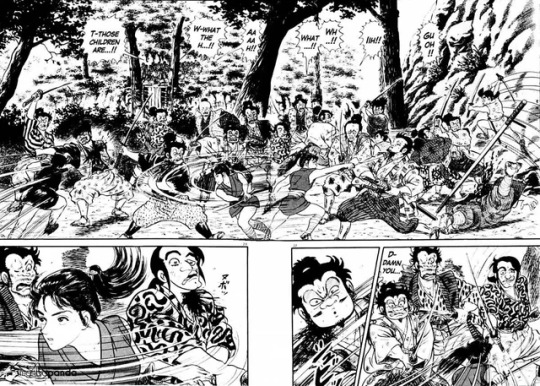
I do not mean that I wanted Blue Eyed Samurai (BES) to romanticize bushido and samurai. However, I did want it to explore these concept, because they made such a big deal out of it. The closest comparison I can make and what I was actually hoping for when going into BES, was something more like the manga Azumi.
The main character of both series, Mizu and Azumi, are similar in several aspects. Both are orphaned women who grew up to become fearsome assassins, whose sworsmanship is so incredible that they're able to fight off hordes of men singlehandedly. Additionally, both are mixed race, though where Azumi only has blue-ish eyes, Azumi has actual blue eyes. Additionally, both work as assassins during the sakoku policy, though while Azumi lives around the time of Tokugawa Ieyasu in the 16th century, at the start of the policy, Mizu lives further along in the 17th century.

Azumi is a gritty look into (among other things) both shinobi and samurai that does not romanticize either, and has won an award for its exploration of these concepts in relation to buddhism. In fact, everyone in Azumi suffers. The only one who is perhaps glorified is Azumi, who many critics compare to a boddhisattva.
Throughout the story, Azumi works to not become too attached to earthly comforts, but still suffers because of her attachment to her companions. As Azumi completes her pruning missions for her boss (the Buddhist monk Tenkai), she accumulates a lot of bad karma in the form of endless waves of people pursuing her for either revenge, the bounty on her head, the thrill of defeating a master swordswoman, etc. Because of it, 90% of her closest companions SPOILER die, and many of her friends are raped or permanently maimed, and has to deal with the trauma and practical inconveniences of it. Often because they are caught in the crossfire between Azumi's targets or those who pursue her.
By the end of the story, Azumi still ends up making new companions like usual and her boss continues wanting to send her on pruning missions. But she decides to leave them all behind, so that those she cares about will not be affected by her bad karma again. She knows she will have to stay on the road indefinitely and will never really be able to enjoy the comforts of settling down, because of her pursuers. The series makes the buddhist argument that earthly attachment in general causes suffering, and Azumi is enlightened by abandoning those attachments and by facing her karma, although that does not mean she will not end up with a violent death. The story ends openly with Azumi wandering off into obscurity.
Mizu is not a samurai
We could argue that she is a ronin, but then she'd technically must've been serving a lord as a samurai in the past. She should be at least be a tiny bit concerned with chivalry; At least enough to discuss or talk about it, which we know isn't the case. Mizu is closer to being a shinobi/ninja, since her goal is to assassinate her 4 maybe fathers. Another thing Mizu shares with shinobi is that both are often criticised by samurai because of their penchant for ambushes and lack of concern for bushido / warriors code. Yet she breaks the mold of being a shinobi, since she doesn't really sneak around in (civilian) disguise and will openly brawl her way through a dojo and into a fort. In this aspect, Azumi is much more like a shinobi.
While Mizu's motivation is simply revenge for the injustice she and her mother suffered at the hands of the gaijin faction, in Azumi the motivation is to prune the country like a bonsai tree off individuals which may threathen a new age of peace, and prevent the country from slipping back into the civil war that marked the Sengoku period.
But where characters in Blue Eyed Samurai is heavily protected by plot armor, allowing Mizu to be an almost invincible pin cushion, no one is safe in Azumi and injured characters requires months to recover and heal from cuts.

While writing this, I recalled that in episode 5, they interjected a story about a samurai marrying and fathering a child with a woman who descended from an enemy clan. He kills both her and their son, which turns her into a onryō. Mizu being an Onryō works, but I am left questioning how this fits into the story beyond its symbolism, as there's been no explicit supernatural elements in the story. Mizu is bullied for being the (devil) spawn of a quote "white devil" in childhood, I think it would be more interesting if they called her a "white ghost," since onryos (which could represent Mizu) are a type of vengeful female ghost. Furthermore, Taigen often compares Mizu to a dog, esp. when she does not live up to the samurai standards he holds her to. Not sure where that fits in either..
Orientalism
So the statement about samurai criticising shinobi was called out as orientalist. This was my reply:
As for orientalism, I guess Blue Eye Samurai is being orientalist then, which I was kinda feeling while watching but didn't really put into words. It's pretty stereotypical to connect Japanese with honor and samurai after all, contributing to why I felt the show was very American.
In the sense of samurai simply meaning warrior, then we can consider Mizu a samurai. But Taigen (and Akemi) connects being a samurai with honor and complains about fair play. By making this connection, he invokes bushido/chivalry and excludes people who ambush others like assassins from the definition of being a samurai, and by extension criticises assassins like ninjas for not shying away from "dishonorable" ambushes. To restore his honor, Taigen wants to arrange a formal duel and even writes up a challenge letter (hatashijou), which makes sense in terms of the dojo trope. But well, the series does contradict itself a lot in favor of cool one liners, and what it means to be a samurai or knight has changed throughout history.
Time period
Some people began nitpicking the historical accuracy of my commentary, which wasn't really what I was concerned about. I am open to artistic liberty. However, with BES it was a little bit harder, since they made so many historical references and leaned into the jidaigeki genre, but then broke it in ways that came off as uncanny to me. Looking back, I guess this uncanny feeling was the orientalism letting itself be known, though I couldn't put it into words back then.
As jidaigeki is a subgenre of historical stories, certain cues does make me expect certain things. Like when I see an English-speaking gaijin as the antagonist, I would make the connection that this story is probably set sometime after the Americans forced Japan to open up for trade in the 1800s. Yet this expectation is then contradicted when I learn that no foreigners are allowed in Japan yet due to the Sakoku policy, which makes me wonder what this Irishman is doing here all alone centuries too early and how he even managed to climb to such a powerful position while being so isolated.
Gaijins as antagonists
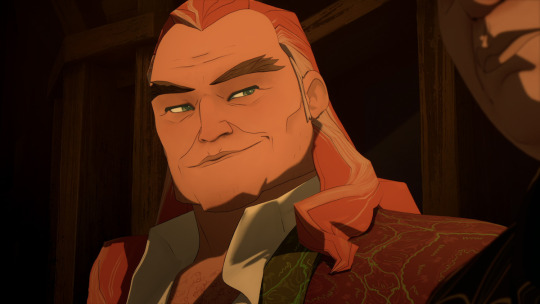
Why an Irishman as the gaijin antagonist? It'd make more sense if it was a portuguese or dutch. If Blue Eyed Samurai is set in 17th century Edo Japan, it's a long time off when the Americans forced Japan to put down the sakoku policy, and even then, why Britain/London? If anything, Japan and Britain liked each other enough to form an alliance for their shared fear of Russia.
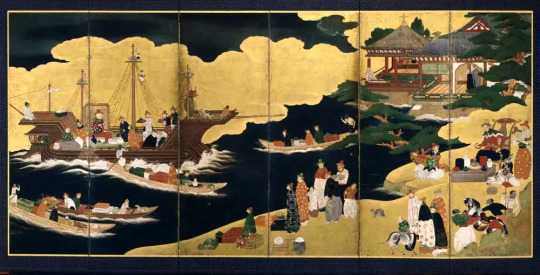

Why not other colonial powers who were actually active in Japan and Asia overall at the time (the Dutch) or the ones who caused Christianity to be banned during the sakoku (the Portuguese).
My first thought of a precedent goes to Konishi Shizune, the Christian revolutionary leader in Azumi who's also mixed race like Azumi, which is based on the historical Amakusa Shiro.
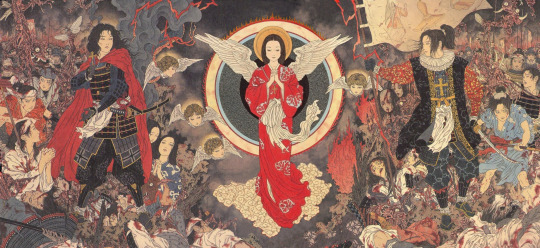
(Depictions of Gaijins: Americans during postwar Japan in Hajime no Ippo. Senator Armstrong in Metal Gear Solid)
Japanese in Europe
With Mizu heading to Europe, I came across people discussing the plot armor and how Mizu wouldn't stand a chance against the guns nor London police. It came off as kind of white supremacist, and the entire thread was locked because of unsolicited opinions from outsiders.
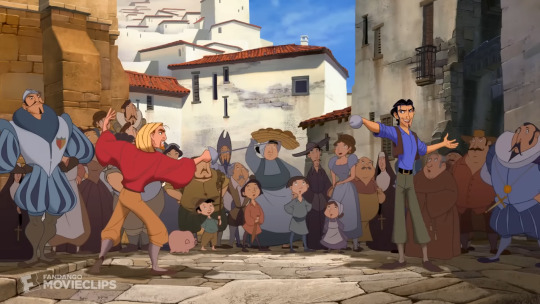
To be fair, Japan had guns too at the time. According to Netflix themselves, Blue Eye Samurai takes place in the 1600s. If that's the case, it means that the guns were mostly muskets, rifles and pistols which took time to load, so people did still use swords even in Europe. And only a century earlier in the 1500s, when Dreamwork's El Dorado is set, people would still use firearms and crossbows side by side, and Oda Nobunaga also used firearms in his own warfare during the sengoku period.
Also, the police didn't exist yet, since the UK police were created in the late 1700s. As for the London battalion or royal guards storming her, it'd either amount to when she was stormed by the hand claw guys. The plot armor in the first season was a lot imo even then though. But sneaking up on them depends on the terrain and context, so I can see it happening.

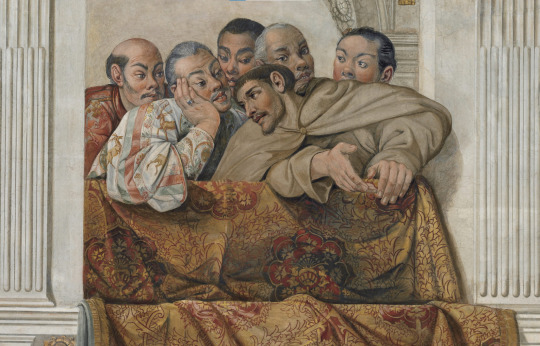
Furthermore, it's not unrealistic for Japanese people to travel to Europe, because there's historical precedence for this. In 1613, Hasekura Tsunenaga was sent on a diplomatic mission to negotiate with the pope and the king of Spain, and some of his men even stayed behind to form the Japon clan in Spain. The expedition took 7 years, and ironically enough, once he returned, christianity had already been banned in Japan. The people who still kept the Christian faith in spite of this came to be known as kakure kirishitan.
Debauchery means it's for adults ..
The way characters (esp. Mizu) will throw out badass oneliners as if on a treadmill, only to contradict exactly what she said as short as 5 seconds later does mess with my suspension of disbelief.
The story also goes into protitution and patriarchy, though it also felt superficial to me. If anything it feels like an excuse for fan service, similar to Game of Thrones in a sense. Like they know that sex sells, and that's what "the audience really wants." That said, again I enjoyed both GOT and Blue Eye Samurai, even though some may laconically break the former down to "dragons and tits" and the latter to "guts and tits".
Token representation
Mizu's apprentice was born without hands, which could have brought about an interesting exploration of disability. But instead, he's relegated to being a quirky sidekick and comedic relief..
BES is an American story
Blue Eyed Samurai has all the visual motifs of a Japanese samurai story (jidaigeki), but the tropes and logic is extremely American. It does get the artifacts and set dressing of a jidaigeki story right (surprisingly accurate at some points), which is why it triggered the uncanny valley for me sometimes. When certain artifacts and set ups appeared, I expected it to follow certain tropes I'm used to from jidaigeki, but it didn't really do that.
Patriarchy and gender roles
While I understand and appreciate your critique, I don't think the narrative is grounded in realism. It's more like expressing the need that women do have to see themselves in the shoes of a physically invincible protagonist. Also the motivation isn't simply revenge - what has happened to Mizu has convinced that her very existence is suffering. She's internalized the hate to an extent that it no longer matters whether she lives or dies. She will slowly change as a person and her motivations will also change, which I hope we get to see . All the characters are somewhere trying to rebel against their gender roles, and that I feel is the 'message'. Also as far as the right antagonist to show goes, Fowler seems an indictment of British colonialism a few centuries too soon, but his attitudes aren't unfamiliar. At all.
Blue Eyed Samurai doesn't explore the concepts it references or markets itself with, but seems to throw them around because samurai and honor sounds cool and is a stereotypically Japanese/Sinosphere thing. Instead it'd rather explore gender roles and patriarchy. And the character Blue Eyed Samurai primarily uses to explore these themes with isn't the titular protagonist, but rather Princess Akemi.
But Akemi's struggles with patriarchy, also comes off as more a Western suffragette story than a Sinosphere one.
The Princess as a Caged Bird
Other stories about gender roles and patriarchy in ancient Japan to which we can compare this to is probably Isao Takahata's Princess Kaguya, though this one is probably set long before BES in the Heian period.
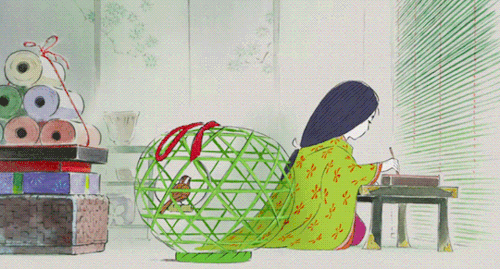
Like in Kaguya, the ohaguro set is presented as a symbol of oppression for Akemi. However, instead of being explicitly oppressed by outside forces like Akemi, Kaguya is instead pressured by societies and her father's idea of what a princess should be to become happy. Throughout the film, Kaguya questions what it is all for and even counters against her governess that "a princess is not a human then!"
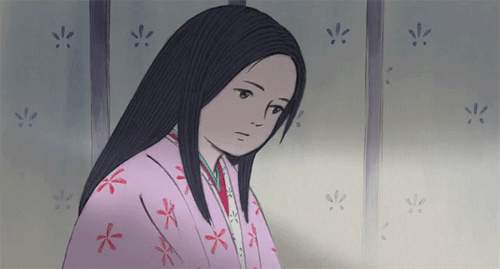
Princess Kaguya as a roadside flower. To be plucked in a moment of fancy, and neglected once savored and bored. Merely a trophy to be won and stowed away in a display cabinet.
The film explores what makes life worth living, by exploring the difference between humanity and moon people.
Filial piety. Fulfilling your own dreams through your offspring. Showing off achievements to relatives (accumulating merit).
Geisha and maiko in contrast to the Oiran of the red light district. Streetwalkers. Prostitution - the world's oldest profession.
Oda Nobunaga's younger sister in Nobunaga Concerto and Azumi.
Hypergamy. Tradition of men being adopted into the wife's household. The Fujiwara clan of the Heian period, who continuously married their women into the imperial family for generations. Attitudes around cheating and monogamy (Genji Monogatari).
The Fallacy of the Stereotypical Asian woman
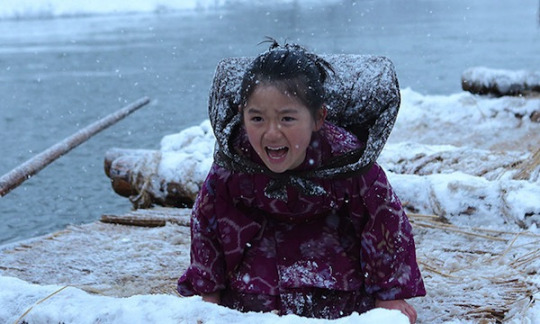
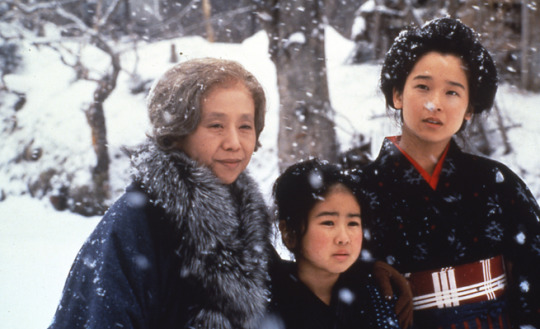
Oshin - Resilience and endurance.
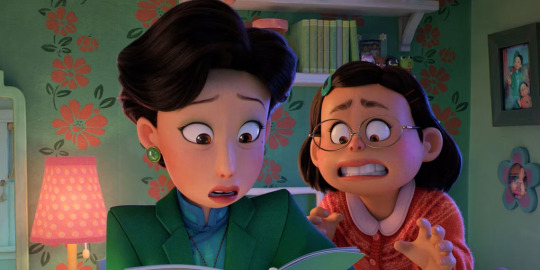
Asian women as firecrackers. There's a reason why the stereotype of Tiger Mom even came to be, because Asian women and people in general are not weak and strictly submissive, although they are often mistaken as doormats.
Honne and tatemae
Yamato Nadeshiko
While writing about this, I ended up going on a tangent about Asian women, which you can read here: The Fallacy of the Stereotypical Asian Woman.
Gender roles in Genderbender
Kaze Hikaru
Ryou
Torikaebaya Monogatari, where a brother and sister in the Heian period is gender mixed at birth, to fulfil gender roles they're more "suited" for according to societal expectations. Another Heian period text about a guy who crossdresses as a woman to get close to a woman he has a crush on.
Gender fluidity has been the norm throughout most of history.
A wolf in sheep's clothing
I guess the show is more concerned about gender roles and patriarchy. I'm actually not all that concerned with historical accuracy, but I couldn't help but be thrown off by how it felt like vastly different time periods (and thus different expectations in terms of jidaigeki tropes) were meshed together. I still stand by that the show is a very (overseas Asian/) (Asian) American narrative, which made it uncanny how accurate it still was in terms of getting the artefacts etc. of a jidaigeki right. Sort of like a "wolf in sheeps clothing," though that doesn't make it a bad thing. For example, Akemi feels more like a Western suffragette, rather than an Asian feminist. Yet the ohaguro set etc. may be a reference to Isao Takahata's Princess Kaguya, which is about feminism.
The story came off as stereotypical to me. Yet it does get the artifacts and set dressing of a jidaigeki story right (surprisingly accurate at some points). I did cringe at some points or feel the uncanny valley, but again overall the show was engaging and enjoyable.
I've enjoyed other orientalist stories before, such as Kung Fu Panda and Avatar the Last Airbender. I've also enjoyed occidentalist stories like mohuan and isekai. Yet something with Blue Eye Samurai made me cringe sometimes. Comparing it to the others I've mentioned, perhaps it's because it's set in a more non-fantastical setting as opposed to a jianghu of sorts idk. Blue Eye Samurai is still entertaining though, and may be the start of a new genre.
It's hard to explain what it feels like for people who don't have the same cultural references, so here's an example of occidentalism. I noticed that when Genshin Impact (a Chinese game) released the new Fontaine region where they decided to mix Britain, Italy, France etc., which people claimed is just plain weird haha. But Fontaine has still been well received regardless it seems. On the other hand, I still cringe every time I see Senator Armstrong in Metal Gear Solid.
Historical references
Random, but here's a list of different artifacts and set dressings that appeared in the show. The little theatre play about the ronin and his wife uses kurogo (black clad actors) to manipulate the dolls, which was novel to see. Previously I've mostly watched kurogo being used to manipulate perspective such as in this Matrix Ping Pong skit and the Tokyo 2020 pictogram opening ceremony. Traditionally, Kurogo is used in Kabuki to create special effects and are supposed to be invisible to the audience.

Mizu's husband uses a naginata, which is basically a spear. Although also used by warriors in general, it was often used by women.

#Blue Eyed Samurai#Netflix#review#criticism#Azumi#Kung Fu Panda#Ghost of Tsushima#Avatar the Last Airbender#samurai#bushido#shinobi#ninja#onryo#gaijin#Sakoku#karma#revenge#uncanny valley#kurogo#feminism#orientalism#occidentalism#decolonization#blog
97 notes
·
View notes
Text
Words have spread that Hiroyuki Sanada is in talk for a role in the Ghost of Tsushima film and I'm pinching myself is this real. Hiroyuki? In my Tsushima? Consider me sat. Well nothing is confirmed yet, none of the cast are confirmed actually, but I'm having some fancast idea for him and and it gets more absurd.
Lord Shimura // Most popular fan choice, my top choice too. This will tenfold the angst, couldn't imagine a better person to play hurt/comfort with emphasise on hurt. 100/10 emotional damage.
Kazumasa Sakai // Could work very well too. 10/10 Iki island trauma. Also, been thinking for long that the Sakai clan armor design looks similar to Ujio's armor in The Last Samurai, so there's some visual.


Sensei Ishikawa // Wouldn't that be interesting. Let my man have some bow and arrow variety for once.
Some random NPC boss fight // weird interesting choice ngl. Everyone suspecting it's just some random passing character, but face reveal and boom hiroyuki sanada jumpscare.
The Shogun // Funniest possible choice lmao. Someone in the production watched that show and got absolutely floored. Have him as a fictional Hojo Tokimune-esque shogun just to terror both Lord Shimura and Jin.
#personally I still prefer to have a second Ghost of Tsushima game instead of a film#and have Hiroyuki Sanada voicing and modeling in it#now that would be something#Shimura!hiro would broke me so hard tho#ghost of tsushima#jin sakai#lord shimura#kazumasa sakai#sensei ishikawa#hiroyuki sanada#hojo tokimune mention#they made hojo hot in civ 6 I won't forget#where is the second game sucker punch I am asking respectfully
29 notes
·
View notes
Text
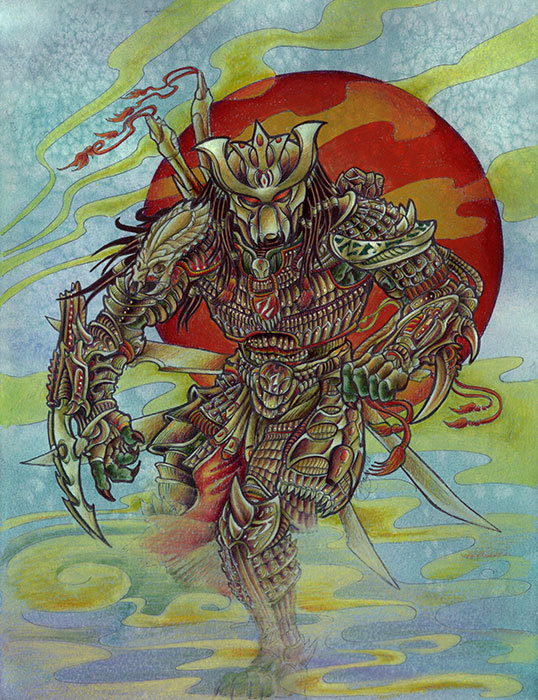
This is Shogun, done in 2010 as an art trade for a DeviantArt friend. Todd McFarlane's Samurai Spawn action figures inspired a lot of the armor design for this guy. My trade partner wanted the helmet design to look like the ones in one of the recet AvP series (Three World War, I think), but left the rest of the design up to me. I thought the helmets looked very samurai-esque.
Yes, this guy was an absolute bear to color. Not sorry at all. It's still among my favorite Predator drawings.
I made this with ink, watercolor, and Prismacolor pencils.
#predator#yautja#samurai#shogun#warrior#ronin#traditional art#traditional media#mixed media#prismacolor
41 notes
·
View notes
Text
— Styling Teyvat: a Thousand Waves Under the Moon
a look inspired by Sangonomiya Kokomi

“the bottomlessness of the sea blossoms inside me” clarice lispector, tr. by johnny lorenz, um sopro de vida
iris van herpen couture 2020 - alexander mcqueen ss10 - 3d printed nail art by eichi matsunaga - 3d printed ear piece by rohan mirza
This gown's transition from a fitted top to dimensional, billowing layers of skirt and sleeve, immediately reminded me of the concept "rising from the sea," an homage to the people of watatsumi island who's ancestors climbed out of the depths of the dark sea, from enkanomiya to the surface
The shoes from alexander mcqueen’s 2010 collection were chosen for it’s skeletal design as a nod to the remains of watatsumi’s god, the great serpent orobashi, who sacrificed itself to spare its people, and was ultimately slain by the raiden shogun.
I wanted to keep hair and makeup relatively simple since the gown is already so dynamic. The 3d printed accessories are seemingly delicate, but with an edge, not unlike kokomi herself, whose true skills lie in the art of war.
a/n: completely self indulgent, but I'm combining by love for genshin with my love of fashion! I wanted to create met gala-esque looks inspired by genshin characters because I think there's so much to explore
© silkjade — do not steal, plagiarize, translate or repost any content onto any other platform
#— 𝓼𝓹𝓾𝓷 𝓯𝓻𝓸𝓶 𝓼𝓲𝓵𝓴#genshin impact#genshin kokomi#sangonomiya kokomi#fashion board#moodboards#aesthetic moodboard#genshin moodboard#genshin visuals#haute couture
281 notes
·
View notes
Text
I feel like the fact that shogun’s design would better fit my Beelzebub just says how bad it is for her character lol
Should’ve had a long kimono and a tight bun and looked a bit more military-esque but I guess they just wanted to show off the legs instead 🙄
0 notes
Text
Aethril/Lady Star-Born, The Descended Goddess
And here is my first entry to darkravenfilms #drfhistoric contest out on instagram! Aethril, the descended Goddess! A Samurai/Shogin-esque designed character.
-======-








Name: Aethril
Title/s: Lady Star-Born
Species: Descended/Mortal Goddess
Weapon/s: Katana, dual energy daggers
Bio: Aethril, or Lady Star-Born as she is more oft reffered to by, is a warrior of great prowess and renown despite her origins being largely unknown. Of course this does little to stop the ideas others, nor the spread stories that come from them.
Of the most popular is that she is quite literally a child from the heavens. The God of the night sky birthing her from a star that had fallen to their planet, and gifted her a portion of it's power so she could be it's vassal, and act as it's warrior where it could not.
Suprisingly enough this story is actually the closest to her true origins.
While she does have some relation to the 'sunless' God, and even carries a portion of the stars' power, she did not need to be born by either to have what was already, or at least once was hers.
Aethril is, or at least was once the Goddess of the stars herself before she had to descend into mortality with the fellow gods of her generation. Once a goddess, now merely a mortal warrior... Though she still retains her original abilities, as decreased as they have been, has the capability to wield heavenly energy, and is technically also still a divine, if mortal, being.
Nowadays Aethril spends her time keeping acquainted with her fellow descended Gods, promoting peace (or at least as close an equivalent as their fantasy-esque world has), solving conflicts where she finds them/ and wandering the world in search of the adventures she could never have as one of her world's deities.
-======-
As one might note (at least from those who know my older work) Aethril is honestly one of my best Mocs in build and detail work to date... Though far too much of her is pressure based.
In particular are her skirt(?I mean, yes, it is supposed to be based off of actual armour plating, but idk what exactly you'd call that)) details! The majority of which is rather loose, and/or held in place due to the positioning of other pieces... Yet still manages to pull off a surprisingly stable build despite that.
I have to thank Wombat Combat Pictures for this development in my moccing skill. I found myself inspired after looking back through his work and being reminded of just how awesome all his Mocs were! For anyone who hasn't yet you should check out his channel. His advice and how-to's are beyond helpful!
-======-
Oh! Also, here's a couple of extra pics to show off the weird construction I had to throw together to fit her 'armour' pieces on.


#Bionicle#moc#contest entry#darkravenfilms#drfhistoric#darkravenfilms contest entry#drfhistoric contest entry#instagram contest entry#Aethril#Lady Star-Born#Descended Goddess#Descended Goddess of the night sky#Aethril The Descended Goddess#Lady Star-Born The Descended Goddess#Aethril The Descended Goddess of the night sky#Lady Star-Born The Descended Goddess of the night sky'#Descended Goddess of the stars#Aethril The Descended Goddess of the stars#Lady Star-Born The Descended Goddess of the stars#Shogun-esque design#Samurai-esque design#Shogun-esque character#Samurai-esque character#Goddess of the night sky#Goddess of the stars
8 notes
·
View notes
Text
One Piece and Masks that are never used again
In One Piece there is a repeatedly used technique where a character’s design is hidden by a mask or a costume. Then their true look is revealed. But the strange thing is that this mask is often never worn again. A case of Oda forgot? Or maybe Oda doesn’t care. The mask is meant to keep the audience from knowing what the person looks like, there doesn’t really need to be an in-universe reason. But I wanted to thoroughly examine these cases to see if there was one.

The first thing that comes to mind is Garp. When he’s training Koby and Helmeppo he has an iconic dog mask.

The real-world explanation is that Garp was in Romance Dawn version 2, and had a role very similar to Shanks in the other versions of Romance Dawn. If he didn’t wear the dog mask, fans could see the “He’s Luffy’s grandfather��� reveal from miles away.
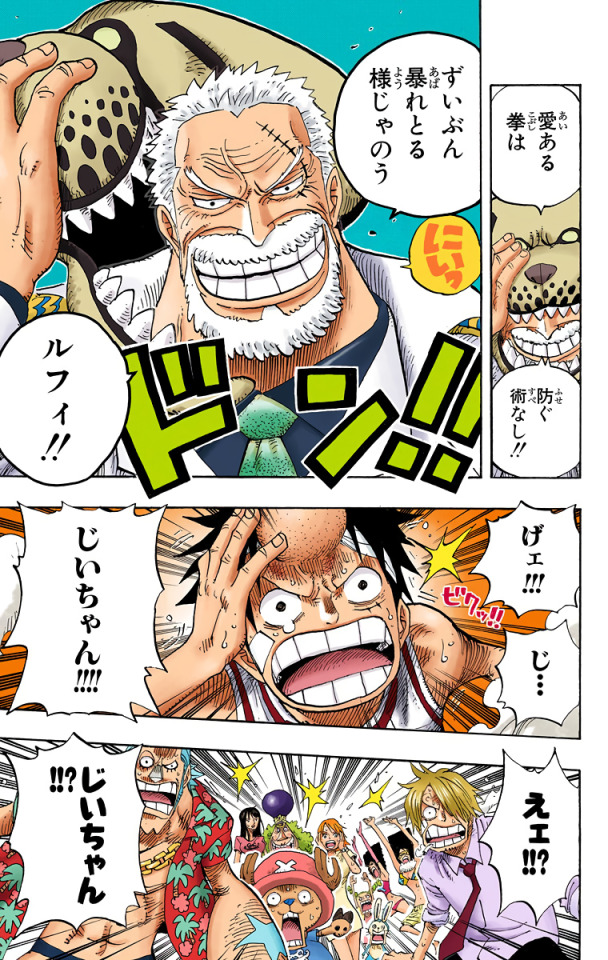
The only problem is that in Post-Enies Lobby he takes the mask off, and it’s never seen again; not once. This wouldn’t be a problem, it can just be shrugged off as “he stopped liking it.”
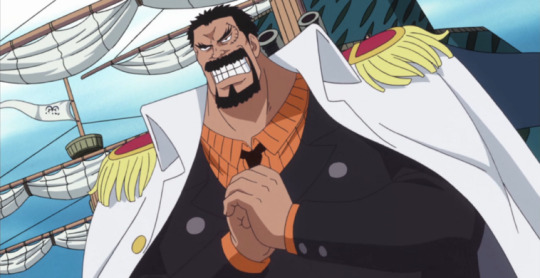
The one issue is that he does not even wear it in flashbacks. Why did he only wear it while training Koby and Helmeppo?
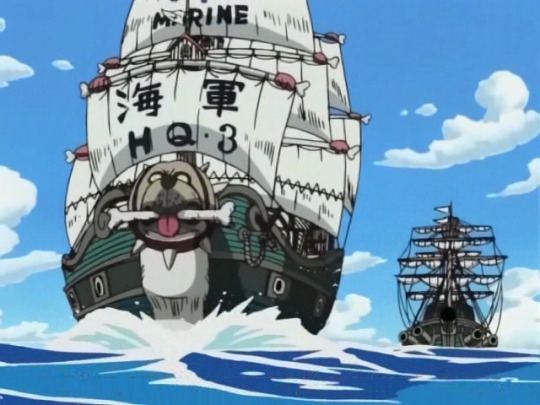
My conjecture is it has to do with his ship; it’s likely he did not get this ship until he was promoted to Vice Admiral, hence he doesn’t have it in the flashbacks. As for why he doesn’t wear it anymore, I think the answer “he didn’t like wearing it anymore” suffices.

In fact I can imagine the Vice Admiral Dalmatian being a factor. Perhaps he didn’t want to resemble him so much.

Wyper wears a mask when he first attacks the Straw Hats and is never seen with it again.
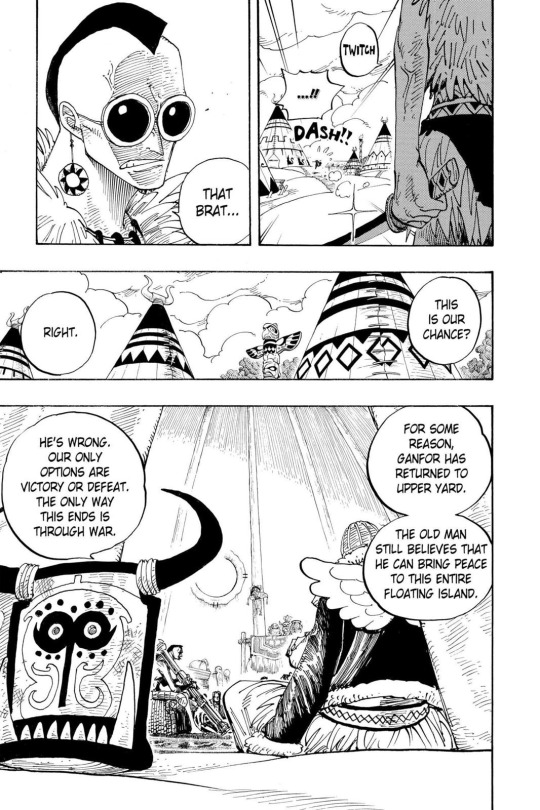
In the chapter where his face is revealed, there’s a panel that, imo, suggests he’s discarded it for some unknown reason. Which is somewhat of a contrivance, but not really a plot hole. At the very least, Oda didn’t straight up forget the mask.

Franky’s debut costume is quite exotic and not at all like his fashion. Again, once he takes it off, it’s never seen again. This one has a significantly more concrete explanation.
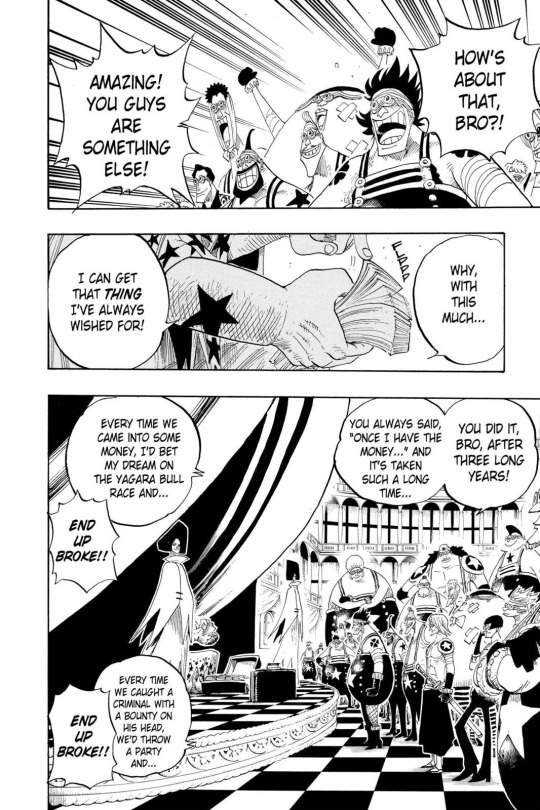
Franky wanted to buy a certain thing during a trade at the costume festival in San Faldo.

This festival is the reason so many people were masked in Water Seven, including the CP9 members. This is even how Usopp got his Sogeking mask; there was a surplus of masks at Water Seven.

It wasn’t until the Post-Enies Lobby arc that we found out why he stole 200M from Usopp, and what that “thing” he wanted to buy was.
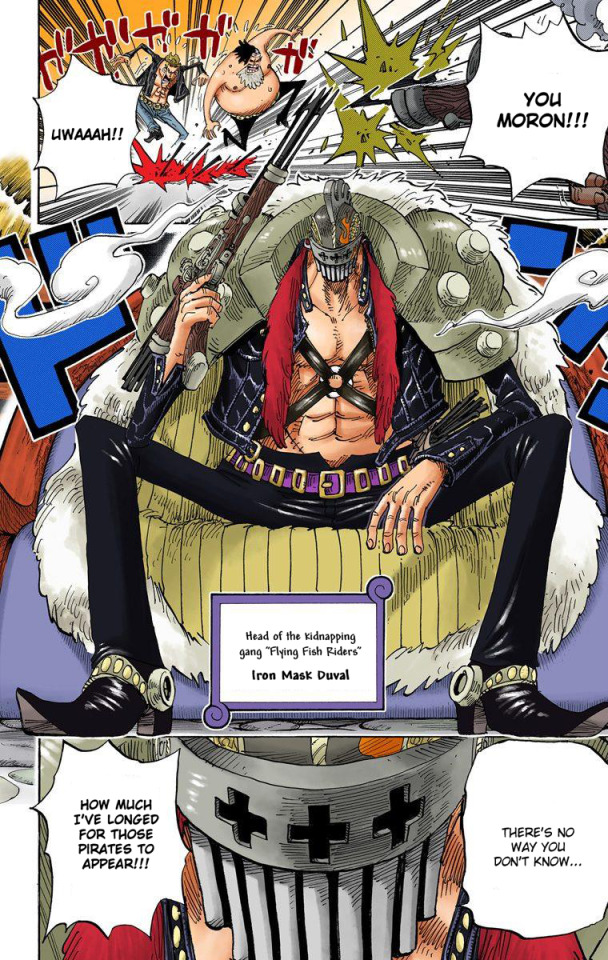
Duval is quite simple; he was on the run for resembling Sanji’s fake wanted poster and once his face was changed, he didn’t need it anymore. He doesn’t have it in the flashbacks because he wasn’t on the run yet.

In Punk Hazard, Caesar Clown is in a bodiless gas form for quite a few chapters before finally revealing his true form. He has a few conversations and goes to multiple rooms looking like this, so it’s crazy to think that he doesn’t use this form much after or before.
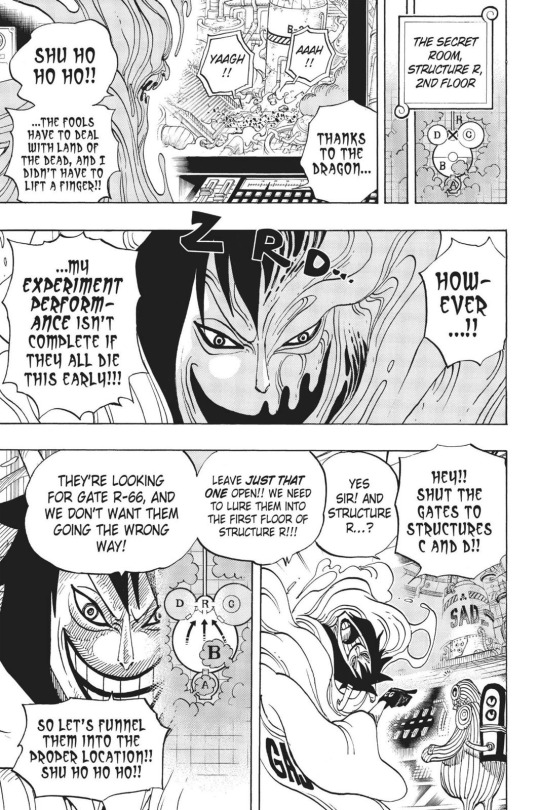
Well even in the late stages of Punk Hazard, Caesar can be seen back in his gas form. It seems to be a state he likes to be in when he’s in comfort or concentration. And I simply don’t think there were any opportunities in Dressrosa or Whole Cake Island to show him in that state.

And even when he’s in his “human” form, it appears his coat is made of his gas.
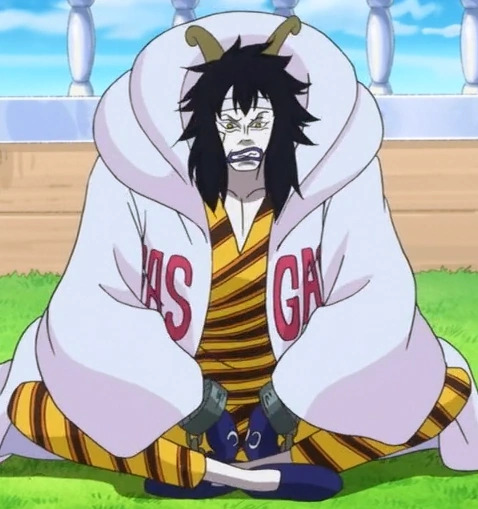
Or at least it partially is: when sea prism cuffs are on, the coat is still there but doesn’t look quite the same.

One of the most recent examples is Yamato. The simple real-world explanation is that Oda wanted to make it a surprise reveal that Yamato is not a cis man. But why was he wearing that? “It’s a party” might suffice, except nobody else was wearing a mask, and Yamato was not attending.
My initial conclusion was that “Kaido was going to crown him Shogun of New Onigashima, so clearly this is some sort of ceremonial thing.”
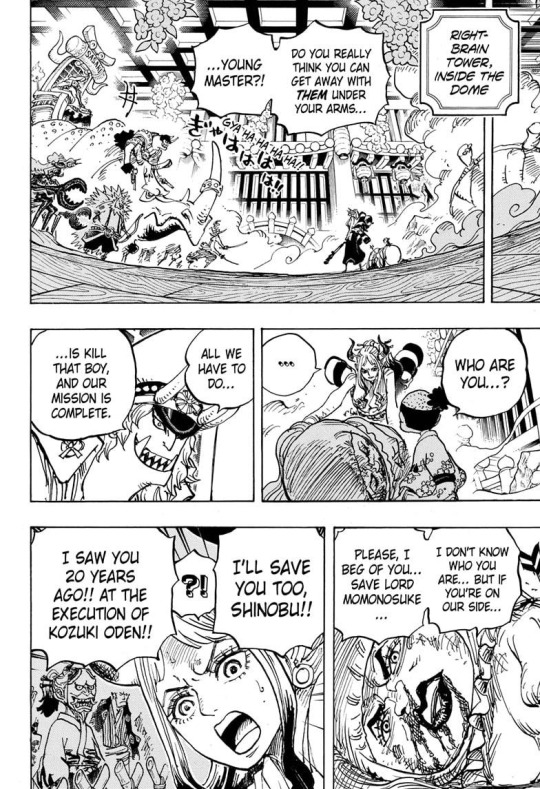
The issue is that Yamato wore this same mask at age 8 during Oden’s execution. So it’s not as simple as that.
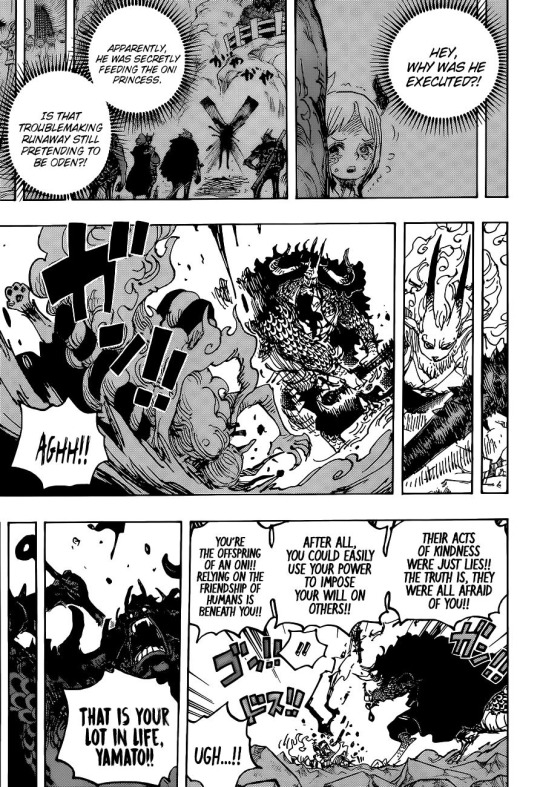
I suspect this is more closely related to how Yamato is the “Oni Princess”, he and Kaido are both presumably some sort of race of Oni: hence the horns.
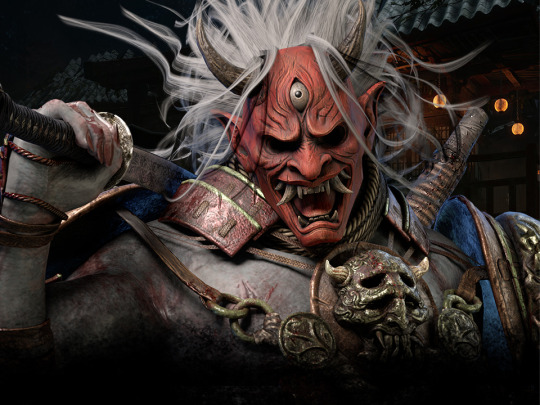
Now I am no Japanese culture expert, but from many interpretations I’ve seen, these Ogre-esque creatures are masked.
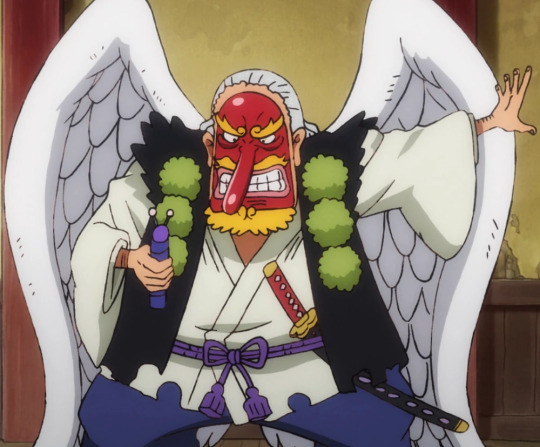
It is not disimilar from how Tenguyama Hitetsu wears a Tengu mask.
#Garp#Monkey D Garp#Monkey D. Garp#Koby#Coby#Helmeppo#Romance Dawn#East Blue#Post-Enies Lobby#Post Enies Lobby#Water 7#Duval#Sabaody#Sabaody Archipelago#Summit War#Skypiea#Sky Island#Caesar Clown#Punk Hazard#Yamato#Wano#Onigashima#Yonko#Dressrosa#anime#manga
228 notes
·
View notes
Note
hello! for the follower event : hitting two birds with one stone by requesting a piece for the beast!au. can be whatever you want it to be lol. enjoy! -🪶
Event: 100+ Followers QnA!
Okay so
I’m gonna go with some thoughts I have regarding which characters I have ideas for design wise + some misc meta™️ information lmao
Though the only “meta” I have is that this entire au came from a dream I had where mhy did a genshin crossover event like the horizon zero dawn event with Aloy but instead of that they did a crossover with bloodborne, hence all my gotdamn references BJDBDKXBX
So anyways, regarding how the change “spreads” I like to think that Mondstadt got it first, and in Mondstadt it spreads quickly but is the least (relatively) painful compared to the other two (known) nations due to the fact they were the one to essentially “shoot first”
(More under the cut because this will get long)
(Also a general warning because there’s gonna be lots of body horror described, and favorite characters suffering a whole lot)
Liyue has the “slowest” spread but it’s the most painful, mirroring Zhongli, the Qixing, and the adepti’s persistence
Lastly, Inazuma has the fastest spread so to speak, the pain varies but they usually have the most “monstrous” transformations compared to the other two
Going into character specifics, I’ll start with the archons before moving onto a select few
Venti, you know about biblically correct angels? You know what seraph’s jobs basically are? Yeah then you probably know where I’m going with this. Venti essentially becomes Mondstadt’s first biblically correct seraph, made to continuously sing “praises” to god, however unlike seraphs, Venti is not immune to the fire that comes with it
My original venti concept had him literally fusing with dvalin, ala bloodborne Ludwig fusing with his horse™️ but it didn’t really fit too much so it got scrapped
Zhongli I’m still not quite sure on, but maybe something like a mix between dark souls’s gaping dragon and a hydra? Something something, dragon’s greed + regular sagau’s zhongli’s desires to keep us/darling teapotted forever = something about gluttony and greed with all the heads and the giant body mouth
Ei is an interesting case because there’s She™️ and the Raiden shogun, so let’s start with Ei first-
Due to the fact that she’s in her plane all the time + generally refuses to intervene, she becomes a literal phantom/ghost, losing the ability to touch or really interact with people. Toss in the tantalus myth punishment and now Ei cannot eat or drink despite still feeling a need to eat and drink.
On the flip side, the Raiden shogun starts off only by becoming more literally doll/puppet-like, ball jointed, a nutcracker-esque mouth, strings that lead to nowhere, etc etc. however as the imposter hunt decree continues, it becomes... more mangled so to speak, extra limbs coming out from places they shouldn’t be, a new head starts to grow in, etc etc, and in between all the joints and new limbs, you can see stings of red flesh between the cracks
Something like a mix between Tomie from junji ito, and the mannequin spider/monster from silent hill. Eventually I like to think something either like crystal marrow or electro crystals begin forming on the shogun’s back, eventually leading to it becoming immobile and crushed under its own weight, but still alive
Now enough of the archons, time for everyone else! (More or less the select few I have brainworms for)
I like to think most of Mondstadt would have more like, gargoyle or harpy-like transformations, with for example: Jean falling into the gargoyle category and Diluc falling into the harpy category + obligatory howls moving castle inspirations tossed in (aka howl’s monster form)
Everyone, regardless, probably loses access to their visions, but in the sense that they literally FUSE with their element
Diluc’s ribcage starts to split, tearing skin and flesh until his heart and organs are exposed, now burning hot as his heart becomes the literal source of his flames. If he’s closed off emotionally, at least now he can be open physically
Eula head begins to burn from her growing horns in the way only extreme cold can burn, her fingers, legs, extremities begin to grow numb and cold, as a unstoppable frostbite begins to take them. Icy claws replacing her once dainty hands, both too strong and too fragile. She is no longer able to use her claymores
Razor didn’t do anything wrong but due to pure favoritism and “I think he deserves it” he gets to have actual wolf ears and a tail after a night (all painless of course because he’s the goodest boy)
Liyue is mostly safe (from me) because I’m brain empty on ideas for them, but they aren’t safe from YALLS ideas- /hj /lh
But I like to think Ningguang specifically becomes a literal gem™️, due to her desire for mora and prosperity for liyue. But I don’t really have much outside of that, outside of houseki no kuni type gem physics, or something like these two pieces of fanart by a really neat artist
(Insert obligatory hnk anime promo here because GOD the anime adaptation is SO GOOD for a 3d animated anime....)
Inazuma also unfortunately falls under the “head empty vibes only” category as well, but they’d probably all most likely turn into a form of yokai or another. Though the only true yokai-esque idea I have is Ayaka turning into a yuki-onna lmao
Kokomi starts to grow scales and gills, not too alarming considering her origins and such, but soon enough her skin becomes drier, peeling off in sheets and she struggles to breathe. Her new gills only half work, she cannot breathe in air or water, rejected by both land sea. Her fear only begins to grow as she feels her legs fuse into a tail by the days
Something something, werewolf thoma? Cerberus (painful) gorou?? Actual howls moving castle monster howl Kujou Sara???
I don’t really know how to end all this rambling but uhhhhh
Almost everyones fucked, darling’s living their best life, the kids and the ones who helped or didn’t hurt darling physically or mentally are safe
Yeah <3
#genshin impact#sagau#self aware genshin#genshin sagau#beastly scourage.au#general scenarios.tag#sagau.villain#100 qna.event#anonymous#🪶.anon#🍡#cw body horror
53 notes
·
View notes
Note
Since someone once asked about geisha being portrayed in video games, have you seen the terrible geisha portrayals in Total War: Shogun 1 and 2? the design is awful (oiran-esque hair ornaments, bad kimono) and the way they're used in the game plays into ridiculous seductress stereotypes (in one scenario, the geisha even disrobes totally unnecessarily for a few seconds before assassinating another character!) The fact that the second game was published by Sega makes it all the more depressing.
I’ve never heard of those games so I can’t really comment ^^;
3 notes
·
View notes
Text
Did you know...
That Danzig’s classic logo:
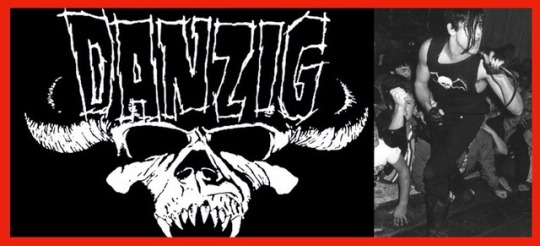
Was originally designed and created for a Marvel comic book cover?

Crystar
Today, not many comic book fans remember the Marvel character Crystar. This relatively obscure 80s character was originally created and developed for a line of toys. Crystar was a crystalline warrior who came from the world known as Crystallium-where everything was made of crystal and most characters had bad, rock-themed pun names like Ogeode, Feldspar or Stalax. Marvel Comics later created a Crystar comic book to accompany and promote Remco’s Crystar toyline. This is one of Michael Golden’s many classic comic book covers and is probably recognizable to any die-hard Danzig fan. I doubt Michael Golden imagined when he first created this cover, that someday one aspect of this image would be the identifying symbol of a major band. I’ve always wondered if Michael Golden receives any kind of compensation or recognition for creating the original comic cover that formed the basis of that now famous and highly-merchandised Danzig logo.
Marvel partnered with the now-defunct toy company Remco to produce a comic book series to expand the Crystar line of action figures and playsets. This was a common practice in the 70s and 80s. Marvel had also found success with such toy/comic crossovers like the Shogun Warriors, Micronauts and ROM: Spaceknight line of toys. Since the storytelling abilities of the toy industry were so limited, many toy companies benefited by having a comic book expand upon the characters and universe of a limited toy line. Companies like Marvel benefitted by having a large captive audience of kids who were familiar with the toys but would never have bought a comic book otherwise. This would not be the last time Marvel would create a comic series to promote a line of toys. G.I. Joe, He-Man, Transformers and even the beloved Secret Wars line of toys were all popular toy lines that Marvel published comic books to accompanying and promote. He-Man actually had the rare distinction of being one of the only toy lines to have a promotional comic book published by both Marvel and D.C. Toy companies like Remco used to view comic books as an advertising mechanism to draw in new kids while also being a cheap, easy way to create new characters that could eventually become new toys.
The Punk Connection
I’ve always loved the Misfits and by extension Glenn Danzig. Back in my punk days, The Misfits were always my favorite band, usually tied with the Dead Kennedys and the Germs (but I also loved T.S.O.L, the Buzzcocks, The Adicts, Crass and Minor Threat). As a fan of classic horror, sci-fi, and monster movies, I always appreciated The Misfits’ and Danzig’s use of horror and sci-fi imagery in their lyrics and album art. That was actually one of the things that I loved about the Misfits above all other bands; the imagery. All that Vincent Price and Plan 9 imagery really appealed to a kid like me. When I was a punk, comic books were the last thing on my mind. I hadn’t read or collected comics in years by that point. So I never made the connection between Danzig and comic books, despite being aware of Crystar as a character. I remember owning several issues of the Crystar Marvel series as a kid. After all, I am a child of the late 80s and early 90s who grew up owning many toys from some of the most iconic toy lines of the 80s. I was initially surprised that Glenn Danzig would show an interest in comics and co-opt the cover of a Marvel comic book series that targeted kids and was designed to promote a corresponding toy line. That fact is even more surprising looking at some of his later, solo-era imagery and lyrics.
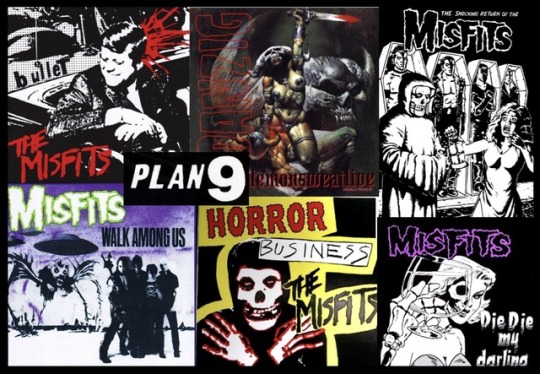
Looking at that kind of album art, I don’t know why anyone would be surprised Danzig digs comics. As it turns out, Glenn Danzig has been into comics for years. This is why he used so much of that sci-fi/horror imagery in his early days in the Misfits and borrowed themes and concepts from comic books like Crystar and Conan. The misfits often used a comic book/Lichtenstein-esque pop-art art style as evidenced in their Bullet imagery with JFK and their Horror Business album art. Danzig also chose an HR Giger painting as one of his later albums. When you compare Frazetta-era “barbarian/warrior” artwork with Danzig’s comics or album art, you can see the obvious inspiration. In the 90s, Danzig actually began publishing his own line of comic books, Verotik comics (Verotik was a portmanteau of the words “violent” and “erotic”). It would be easy to looks at some of the comic books he’s published and dismiss them as immature or sophomoric. After all, they do feature most of the things pubescent boys are into-big pecs, bigger boobs and the biggest swords. It would also be easy to view Danzig’s foray into the medium of comics as a cash grab. This was the era that outsiders and speculators were coming into the comic book field en masse. Many people who had zero interest in producing quality comics came into the field with delusions of making a fortune based on the newfound popularity of comic books.
The Bubble Goes Burst
When the comic book speculator bubble burst in the mid-to-late-90s, many of these new imprints and comic lines went under; never to return to publication. Verotik has managed to outlive Homage, Wildstorm, Continuity, Legend, Malibu, Chaos!, Caliber, Comico, Defiant, Kitchen Sink Press and Eclipse (to name a few). It’s important to remember that those were among the most acclaimed indie comic companies during the 90s comic boom. All of those companies were either bought, closed or are otherwise now defunct. While it is true Verotik published way fewer comics than most of those other companies, Verotik still publishes comics today. Glenn Danzig outlasted them all. Surprisingly, Danzig’s line of Verotik comics have been continuously published since 1994, with Glenn Danzig himself still involved. While other, more mainstream comics have been adapted into the Hollywood Blockbusters we all know, Danzig adapted one of his comics, Grub Girl, into a porno that came out in 2006. Say what you will about adapting a comic book into pornography... it shows that Danzig has found a way to maintain an almost entirely adult audience while simultaneously promoting his line of comics and spinning those characters off into another medium (film).

Mainstream comic readers have not spoken kindly about some of Verotik’s offerings. I certainly don’t like everything that Dark Horse, or Marvel, or Image publish. Many comic fans have dismissed Danzig’s line of comic books for their perceived “low quality.” However, if you go back and examine some of his earliest works, you’d be surprised by some of the names you’d recognize. Many well known, popular writers and artists of today had work published in one of Verotik’s comic books. Grant Morrison actually had a story published in the first issue of Verotika, something he never mentions. Simon Bisley contributed some really solid artwork on many Verotik comics, as did Frank Frazetta.
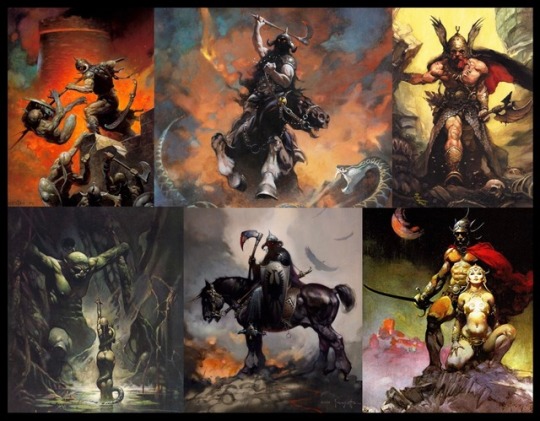
Some of the most iconic Frazetta artwork (beyond his legendary Conan art of course) appeared in Verotik comics. The “Death Dealer” image has come to typify the classic Frazetta “barbarian” style. The Frank Frazetta style of heavily painted Barbarian/Warrior art has almost completely disappeared from the today’s modern comics. In my opinion, Danzig and his line of Verotik comics are almost solely responsible for the preservation of that kind of 80’s barbarian/sword-and-sorcery/heavy metal comic book aesthetic. By the 90s, that genre of comic and it’s associated art style had fallen out of favor with the general public and was considered dated by many critics and fans alike. This kind of hyper-masculine Barbarian imagery existed only on the fringes of pop culture and is virtually nonexistent today. What had been an industry staple was now relegated to a tiny niche audience. Fantasy artwork like that is sorely absent from today’s comic book marketplace. Rafa Garres, Eric Canete, Liam Sharp, Arthur Suydam, Dave Stevens and Kent Williams all contributed artwork to at least one of Verotik’s many comic books. When you re-examine some of the covers to Verotik titles like Jaguar God, Valkyrie or Weird Voodoo, they still look pretty damn good even by modern standards. Painted covers like these have withstood the test of time; good writing and artwork often endures and stays relevant for years.

Legacy of Brutality (and Comic Books)
It‘s a shame that Danzig doesn’t get more recognition for his contribution to comic books from the modern comic book community. I’ve never heard anyone mention Danzig and comics in the same sentence. For a guy who’s written songs for Johnny Cash and Roy Orbison, owns his own label (Plan 9), had a long history with the Misfits, found renewed success with Samhain and again with his solo project Danzig...the guy has quite a resume. Even many punks don’t know that Samhain was essentially a punk supergroup, since their debut album featured former members of Minor Threat, Rosemary’s Babies and Reagan Youth. To switch gears entirely and begin writing and publishing comics shows how seriously he took his interest in comic books. He never compromised his artistic integrity and made exactly the kind of comics and music he wanted. Whether you personally like the results or not, you should respect that kind of commitment and discipline. It’s unfortunate for Danzig since many people in the punk/metal community would mock his comic book pursuits, and the comic industry often resents outsiders coming into the field from another medium, he rarely gets recognition from either community.
His contribution to music cannot be understated and his foray into comics cannot be dismissed as a mere cash grab or way to stay relevant. He put his money where his mouth was and was willing to invest his own money and time into his life-long love of comics. I honestly wish more people would do that. Danzig teamed with some of the best fantasy comic artists in the field at the time and wrote many of Verotik’s comics himself. He is also a graphic artist in his own right who is known to do sketches at signings and conventions. Danzig has created music for over 41 years and for 24 years he has also been involved in the production of comic books. That alone makes you a pretty cool guy in my book. His comics are about as “creator owned” as it gets and in that 24 years he has made the kinds of comics that he wants to make. You can’t dismiss that kind of artistic determination. For a guy who has always been known as the “Heavy Elvis” of punk music, his artistic portfolio is surprisingly diverse. Danzig should be accepted by the comic book community as being every bit as worthy of inclusion as any other, more accepted comic book creators.
Don’t sleep on @therealglenndanzig-blog, the dude might just surprise you.
-AG
#glenn danzig#crystar#comic writer#marvel comics#comics#comic art#comic books#did you know#punk rock#misfits#urban legend#article#comic book artifacts#fantasy#swords and sorcery#fun facts#random facts#horror#sci fi#frank frazetta#dave stevens#samhain#the misfits#comicmemes#comicart#comic book art#michael golden#factoid#its the truth
21 notes
·
View notes
Text
Three Spooky Fictional Knockoff Toylines!
That’s right, as the big writing piece for this spooky time of year, it’s three spooky toylines ripping off bigger properties in a way that do not exist.
These are all public domain/CC0, free to use for whatever you see fit, though crediting me and linking to my Patreon or Ko-Fi would be nice.
Shoutout to @genustoys, @phelous and @therobotmonster for heavily inspiring these with their work!
Now, LET US BEGIN!
Monsterlords of the Nether Realms- This line is an odd duck in that it was a knockoff of a toyline that wasn't all that popular. Namely, Inhumanoids.
It was seemingly designed to be cross-compatible with the large monsters of that line, yet in all irony it stuck around seemingly far longer, likely due to the lower price points it was was able to get away with due to being a “non-branded” product and the cross-compatibility of play pattern with the larger figures.
And they were shockingly lavish for what was seemingly a “low rent” property, which has lead to suspicions of it and its related properties being a money-laundering scheme, or at least cover for something unsavory, though others say it could simply be good craftsmanship and the evidence in favor of and against such is perhaps a story for another day.
There were five of them that ended up bumping around store shelves, give or take a few “extras,” which we will cover as they come.
The first piece; likely intended as the “mascot” due to its prescence in promotional artwork is the one known as MOLINTHA, or “ANTHILL EVIL” on certain variants, a large figure encased in a roughly mountain shaped “shell” when curled in a specific position; with an ominous “maw” that turned into a torso when the figure was uncurled.
The mountain pieces themselves (Which were free-standing on their own) provided a large amount of play value with platforms seemingly shaped for various 3&¾-inch figures, but the body itself was a gorgeous design, with the “scaffolding” where the mountain clicked on turning into a series of platforms for figures to climb and clamber over,
The articulation was low, but the sculpting was pleasantly gnarly, resembling some dark ancient castle covered in mystic carving given humanoid form, without an articulated head but instead a snarling “maw” in which figures could be placed inside. Though, there has been some speculation that this head was ripped off a similar design from the front of the classic D&D Dungeon Master's Guide, and I would be lying if I did not see the resemblance.
As expected, it did not come with any figures, but did come with a large assortment of commonly-circulated plastic “bugs” molded in a clear rubbery plastic; along with a few of the notorous “Chinasaurs” that ended up as the basis for D&D monsters bizarrely enough.
The second known most commonly as “LEVIATHOIN” was a piece that had a similar yet wildly different gimmick. The main “body” was actually simply an inanimate idol, which one might say resembles a very specific image of Baphomet, but the smaller figures were of real interest.
Four five-inch ones, bearing an odd resemblance to a scaled-down Molhilintta minus the scaffolding and with a few odd tweaks, with a similar simple articulation scheme, but also a feature in which the arms and legs could “click” together tightly, which leads to the real draw of such.
Each figure attached to a socket in the main “idol” and functioned as a crude combiner., forming a huge “creature”. Each figure could function as n arm or a leg on either side, and the color variants (Including a few alledged remolds of these torsoes) could be their own article in and of themselves.
The third known as MECHA-SHAG was an extremely simple design and yet also one of the most bizarre of them all. It was a hairy “core” akin to the Masters of the Universe Grizzlor, but with a strange robotic face; limbs and at least a dozen missile launchers. They were Micronauts-styled “safety” missiles, but still fascinatingly odd all the same. There is evidence for the pieces origin as a possible Shogun Warriors/Jumbo Machinder knockoff, but again that is a detail for another day.
The fourth one was known as RUCIBEDO, and was unusual even for this line. It was a stylized kaiju-esque “pterodactyl” with a flapping action; its oddly “bio-mechanical” look seemingly giving credence to the idea that the enigmatic company behind the linwas making a Shogun Warriors knockoff-series before they decided to switch gears, but those are not the only notable parts.
The most blatant one is the fact that it is sculpted in a bright red; translucnet plastic, and not only that but had electric lights wired to the flapping mechanism in some bizarrely spacious “alcoves” in the back (Possibly for aborted missile-firing features), creating an immensely striking effect. Albeit one that had a tendency to break; though there are repair guides out there.
And the fifth PLUCHUN is an odd duck, because it should by all accounts be considered kind of a “ripoff” due to using far less material for the same price point as the others, but is often the most fondly remembered.
It is a small torso seemingly made of organic “pipes with a “hatch” on the head and a button slightly below. It also came with a small container of “slime” indicating its function. Namely, put it in the back of the head; press the button repeatedly; and the slime drips out of the holes in the creature, with a pumping rubber “heart” completing the effect. Weirdly; while the rubber on most of these has rotted off, there appears to be a fully sculpted (Albeit much cruder) “heart” that still moved in and out when the button was pressed.
The whole thing was capped off by immensely long rubbery bendy-limbs in the same style as the “main body's” pipes. These tended to be very fragile, and while memorable, this has the fewest surviving specimens out of them all.
As said before, there are other specimens that may be covered at a later date; such as the odd hand-puppet and the bizarrely remolded Imperial Dinosaurs linked to the line and the smaller-range figures, but this is running a bit long, so I'll leave it here for now.
Nightmare Gores- Relating to the preponderance of He-Man knockoff figure lines in the 80s, and the popularity of slasher films, it was only a matter of time that the two would be combined, in ways only possible without mass-fundie-protest at least) in small lines like this.
In striking red-and-black packaging with crude art of a horde of ghoulish monsters rseemingly ripping out of the card back, with the bizarrely memorable phrase of “WE WILL KILL YOU” coming out of a word balloon, there's relatively few things like it.
It used a standard barbarian body whose origins predated the line; but from where they predated was a matter of debate (Though it is known that it most certainly was original to that company and not a He-Man or Galaxy Hole bootleg(), all the same across the line with differing headsculpts.
The headsculpts did have consistent names, and one could tell their inspirations relatively well. Joe was obviously a Freddy Kreuger without the hat, the hockey-masked Rod was obviously Jason Voorhees, Mike was very obviously a riff on Michael Jackson's Thriller Werecat (Corroborated with the usual non-caucasian color of his body sculpt) and Gross was blatantly the Toxic Avenger. Mush was a generalized “melting” face, but could be said to be taken from Cropsey of The Burning; and Hexen's gas mask was likely inspired by My Bloody Valentine's main antagonist; albeit with bizarrely added devil horns.
Then there are the oddballs. Clash is a fan-favorite alongsid Hexen due to his pure black-plastic body and strange hood in striking red with a black void for a front and two piercing red pupils, but I like Frank a lot if only for being a big ridiculous Frankenstein head repurposed for this, as was what I would call the “Baltard” of this line Stall-9 with his slighly crossed eyes and almost comical grin negating whatever intimidation factory they might have. Redd caps off the line with the strange combination of bull and horse head designs obviously repurposed from the barbarian toyline this comes from in a way that still sorta works.
Their pack in accessories vary across production, but there are some commonalities. Mike; Rod; Hexen and Clash almost always came with cool red vinyl “jackets” and Tedd and Frank almost always came with bizzarrely realistic handguns molded in bright orange. And Stal-9; Mush and Clash came with a “chainsaw: very clearly remolded from a gun.
The rest were a mushmash of machetes and hammers, and knives; axes and clubs that were clearly re-utilized from the original line. There are other “relatives” like the Killer Beasts and the Murder Lady, but we'll leave it here for now.
ShineFriendz- One of the many Tamagochi-come-latelies in the 90s, this line tried valiantly to differentiate itself from the usual Tamagochi clones by giving itself a backlite, far more extensive interaction within the limits of its mono-colored pixel art and a link function for “playtimes,” All in a model approximately the size of a modern day smartphone, and to be supported with early web tie-ins in lieu of an expensive animated series.
Of course, the fact that it was its parent company's first venture into such things; a battery company to be exact (Hence why they felt so secure in being battery-eaters), there was very little oversight into the programming. And, due to a series of circumstances too stupid to mention, the devices had far more memory than they anticipated, and far more than they would need for the device's intended functions.
And, what happens when you have bored programmers and lots of time, you get easter eggs. Lots and lots of unsettling easter eggs. To the point where they took up approximately as much space as the “main” games.
So, they were immensely easy to run into during play, but they went unnoticed by corporate during the first three iterations of the pets. The most notorious of them was the possible evolution called only BREATHING which looked like an emaciated and decrepit eyeless version of the brand's canid mascot-species the Buroof that was continually doing what its name implied and had a legion of ominous quirks too long to list here.
Despite rumors, surprisingly none of the glitches involved causing death or injury to any of the pets. Though, that still didn't make them any less fucked up, with such examples as a “pet” known as BRILT that took the form of continual flame graphic that at times would flicker to the outline of another; random pet, to the weird “bird” known as CAUSE whose pleasure meter would go up if you hit the scold button,
There's a full list of “AnomalyFriendz” (the usual fan nickname0 that's too long to list here, but it wasn't limited to them, with such things as a “Game” that involved running from what looked like a crude pair of jaws to a “food” that looked like a wad with what was unmistakably eyes. And the web fiction didn't help, given how the actual text stories were dark , reading more like if Clive Barker wrote Watership Down with it just being barely within what was “appropriate” for kids, with increasingly less subtle allusions to the “AnomalyFriendz”
The minority of parental complaints weren't what got the execs notice however, it was actually the fans of the property, young girls who wrote in asking about those glitches. Not even in disapproving tones either, just asking whether they were intentional, or even asking if playground rumors (Or the rumors circulating across the website's own forums) were true.
This lead to them trying to integrate the macabre bits into the actual marketing for the toys, with the fourth iteration “FreakyFriendz,” with a cleverly altered shell with an ominously warped corner and more integration of the “anomalous” and “regular” Friends. And that is what sunk the line.
Because, parents actually noticed and; since this was the 90s; they bitched up a storm, leading to most of them being removed from shelves. Which is a shame, because enthusiasts say these were the best models yet.
The company left the business shortly thereafter, but there remains a small cult fandom to this day; complete with officially sanctioned web-iterations and even a few (sadly stillborn) attempts at full on revivals. But, maybe someday...
#action figures#toys#fictional toys#public domain#horror#things that need to exist#things that don't exist#macabre#weird#bootlegs#knockoffs
4 notes
·
View notes
Text
✱ HC DUMP . ┊ tooru & technology

tooru has two phones ! one is an i/phone , to keep with the times and the unfortunate downfall of the flip phone , and also to ... admittedly , download some more games . the other is a flip phone , because it usually gets the work done when he has to focus on his studies ( he’ll bring it to school , for example , because it has enough games to pass the time when he’s commuting , but isn’t enough of a distraction so as to waste his time paying attention to it , and not to his studies / classes ) . he has since given the latter to hikaru , however . [ x ] [ x ]
he has no idea how newer technology works , mostly because japanese culture ( and , arguably , most of east asian culture ) is very “ don’t rock the boat ” - esque . hence , if it isn’t broken , then don’t fix it . as such , he’s often behind on what is in or out of fashion in terms of technology . like, he’s probably only now gotten into f.lappy bird and p.okemon go . however , once he learns about the ins and outs of something new , he hangs onto it really quickly . you may have just introduced him to p.okemon go 2 weeks ago , but he’s already the top player in his area ! [ x ]
some of the things he enjoys most while riding the train to school or his kyudojo is playing games , or reading mobile novels ( basically like fanfiction ) . as an avid author and poet , tooru really enjoys seeing the writing styles of people he sees online . however , he also likes to read things ironically , especially when it comes to s/lash fiction portrayed terribly wrong . it makes him laugh , because he’s part of the lgbt community , and thus can tell when a story has been written by someone who is cishet and knows nothing about being queer whatsoever . [ x ]
his phone cases are usually decorated in maki - e inspired designs ! he likes simplistic designs , and while he is definitely into “ cute ” culture ( pastels , s.anrio , stars / milk boxes / whatever with little faces on them , just ... cute things in general ) , he finds decoden waaay too cluttered for his tastes . also , his fingers can never properly grasp onto decoden cases . he’s broken way too many of his old ones from when he was 14 to ever look back at them . however , his n.intendo 3.ds is covered in a decoden design at the top , since he has less of a problem with it . [ x ]
the maki - e design is a reference not only to tooru’s more minimalistic sense of aesthetic ( he’s also into wabisabi , aka beauty in imperfection ) , but also represents how in his first life , as sakai korekiyo , he was born into a family of retainers to the tokugawa shogunate , marking his status as former nobility in another life , as maki - e symbols were usually used to represent houses of great status [ x ] [ x ]
in accordance to him occasionally indulging in “ cute ” culture , tooru has lil stickers on his phone , and has set endearing ring tones / text tones . if you’re close to him , he has personalized ring tones / text tones for you .
hikaru’s is a recording from a video tooru took , where hikaru sneezed at the end . he clipped it so it’s just the sneeze .
imani ( @/gumpops ) is whatever song she’s recently gotten him hooked to . it’s also sometimes b.ubblegum kk from the a.nimal c.rossing soundtrack
reece ( @/munchingmuff ) is a baby bear , probably from an anime , going “ gau ” , because reece reminds tooru of a big teddy bear
tyler ( @/viperfang ) is a snake hissing . tooru doesn’t even know about tyler’s story , or his affinity towards snakes , but he just has this weird feeling that attributes him to them , so he kind of just ... goes with it .
aomine ( @/powerforwards ) is a choir of angels singing because 1. aomine is a cute angel , and that’s just the truth ^_^ also 2. it’s literally a miracle if tooru can get that guy to text him , or text back , and even then , it’s usually “ what ” . he still treasures the texts he gets from him , though .
link ( @/hylaen ) is ... the sound of bowls hitting each other . don’t ask why , only res and i know why .
nines ( @/hisrust ) is birds chirping because tooru cherishes the day they went out to go meet some sparrows in the park .
his 3.ds is decorated with mint and brown colours . unlike a lot of decoden , which he finds to be cluttered , his is symmetrical and consists of a simple colour palette , as opposed to putting stuff all over the place . he also has those 2000s popup stickers on the inside of his system .
he doesn’t play the 3.ds often . he plays pokemon , but he isn’t a super avid fan that knows everything about the series . he can’t even name a majority of them , he just knows the ones that he likes .
he also enjoys playing h.arvest moon / s.tory of s.easons games
o.tomes are his secret passion , but he can never find any that he really likes . it’s the same with the mobile novel thing , he enjoys visual novels because the writing is really good when you’re working with certain ones , but others are just a mishmash of awful tropes that he absolutely hates . he wishes there were more queer o.tome games , or just queer visual novels , in general . he knows of english ones , but would rather wait until somebody comes out with a fan - translation , since his english isn’t the best .
tooru tends to adhere to cellphone etiquette . he finds it really rude when people talk loudly on their phones in public , but also given his benefit - of - the - doubt nature , he usually gives the person a pass if it sounds like they’re on their phone due to an emergency of some sort . he keeps his cellphone off if he’s standing next to the priority seating ( this is due to the belief that cellphone radiation interferes with medical instruments such as pacemakers ; he doesn’t really believe this to be true , but better safe than sorry , he supposes ) . when he’s sitting or standing away from those seats , however , he just browses the internet , reads up on news , plays games , etc. he usually keeps his cellphone on silent / manner mode , even when he’s at home , however . he doesn’t have many friends , and the ones he does have aren’t wont to randomly call him , anyway , so it’s not like he needs to have his ringtone and text message noises blaring all the time . [ x ]
spams kaomoji while texting like there’s no tomorrow
also really into shorthand writing . will use old as heck abbreviations like 4-6-4-9 ( yo - ro - shi - ku / hello / regards ) or 8-8-9-1-9 ( ha - ya - ku - i - ku / hurry up ) . also likes to use www , which is often seen as the japanese equivalent of “ lol ” , because www can sound like wa - wa - wa , in which ‘ wara ’ means “ to laugh ” . he spams www to the point where it gets a bit annoying , kind of like how we tend to use lol as punctuation at this point .
really humble , almost takes no selfies at all . if you went through his photo gallery , it would just be scenery photos of stuff like the sunset , and also photos of his friends .
has both the kana and the romaji keyboards . the latter just helps him out when he’s learning english , or trying to get used to the english keyboard .
likes to hang out on online forums and talk about stuff . he usually sticks to lgbt - related forums . it’s actually how he realized he was trans ! he had become aware of the lgbt community when he was pretty young , but it wasn’t until he was old enough to go on the internet and look up definitions , terms , discussions , and articles , that he started to figure out more about his identity . this also helped him link the feelings he had within him to internalized queerphobia . embracing his identity and helping teens his age is what he enjoys doing most . he isn’t an expert on these issues , but he still likes to act like a big brother figure to 12-13 year olds who may also be struggling with the same issues that he had at that age .
had a neopets account for like 2 weeks , but he had no idea where to change the language settings , so he quit .
19 notes
·
View notes
Photo

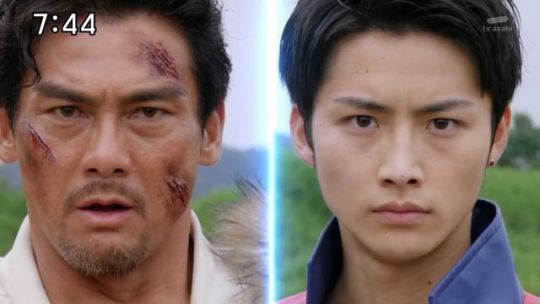


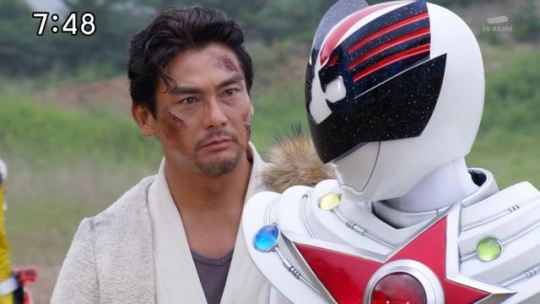

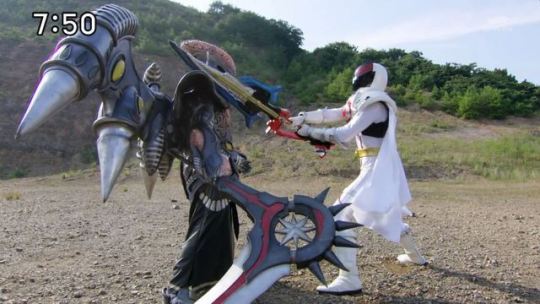

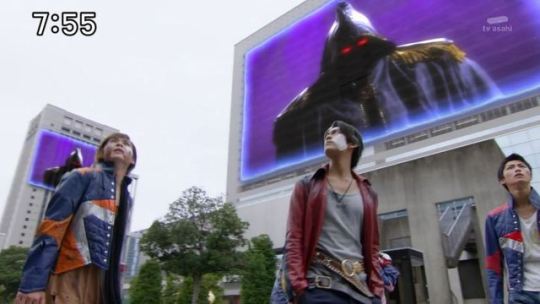
*GASP* Great goodness!!! Kyuranger just refuses to let up, doesn't it? Episode 30 delivers a heart-shattering entry, all wrapped up in a graceful power-up package...
- I'll start with a somewhat unrelated rant: I couldn't watch this episode live last Sunday! Aaaarggh. My internet provider changed the fee (AGAIN... that I'm not even that much surprised anymore), so I'm stuck using free public wifi until yesterday noon. And get this, when I decided to renew it with such heavy heart, let's just say... I got duped BIG TIME. To the point that I'm still slapping my own face in utter disappointment and anger, for falling into the company's sneaky stupid ploy all over again. *SIGH*. Now that THAT's out of the way, on to the recap-view then... - Since the opening scene focuses mainly on Orion and Tsurugi, let's talk about what I forgot to mention on my previous recap-view. That sweet friendly river-side moment between them! Some audience might think that the conversation they brought up regarding Orion's newborn felt... a little on the nose. If you ask me, it's actually NOT. IMO, if you think about it logically and/or chronologically, that dialogue actually made good sense. How? After the supposed final battle with Don Armage, a wounded Past-Tsurugi was brought by Orion to Earth, and put in a cold-sleep aboard the Argo. Fast forward 333 years later, the Rebellions awakened Tsurugi in the present time. He likely spent at least 2 weeks after he woke up, in which during that time he: clashed with the Kyurangers, but eventually became one of them; went to Planet Tocky, and searched for the Horologium Kyu Globe; and along with the 'Time Travel' team, went back to the past to recheck history. Meanwhile, from Orion's side of things, having just completed his deed to the Past-Phoenix Soldier, he spotted the ORION crashing, ran into the Kyurangers, and was reunited with Tsurugi again. If one easily compares the two separate timelines from Tsurugi's and Orion's point of view, then it's become clear. Eventhough they have indeed been 333 years apart, thanks to Horologium, the reality was far more shorter than that! For Orion, it was merely hours if not minutes since he last left Past-Tsurugi in the Argo. Tsurugi on the other hand, had only advanced a month at most due to the cold-sleep. Logically, he still had all the memories prior to the sleep (of 333 years ago) in tact in his mind. THIS is the reason why the dialogue about family between them flowed very naturally! It's just a casual chit-chat between friends who haven't seen each other... fairly briefly. That's all! - Of course, that dialogue still serves as the key for the two of them to deduce that Lucky... might have been Orion's very own descendant. That means, Lucky isn't Orion's son, as the rumor suggested (for now at least, it's still a giant mystery anyway). Regardless of that, he's still an important figure who serves as a catalyst for the Kyurangers, due to having the blood of two Constellation Systems. That's the main reason why Tsurugi, the Kyurangers, and later Orion wants to protect him at all cost. - And that is also where the episode hurts. From the beginning of the episode (or the preview last week), it is teased that Tsurugi might give away his life to heal Lucky. Using the power of Phoenix Kyu Globe is taking the toll out of him, so the chance of him getting out unscathed is minimum at best. We even get to see Tsurugi's quick origin story, of when he first obtained the Kyu Globe when his spaceshuttle crashed. Basically, 'death flag' has been fluttering over Tsurugi, which is why the actual death comes totally unexpected and a lot more shocking. It's Orion's final moment instead!!! - On one hand, Orion IS hiding a severe bloody wound, due to shielding the Kyurangers from Don Armage's devastating attack. So he pretty much has been waving his own giant death flag too. On the other hand, he's a crucial legendary figure who will pass on the legend of the Kyurangers throughout the entire universe. Even the team smartly points out that, without Orion, the Kyurangers wouldn't have existed in the first place. Preview for this episode even showed him in battle, helping Leo Red debuts his new power-up. The general assumption is, there's no way, he's going to die, right? That's where Kyuranger throws us off balance once again, because Orion passes away anyway! It's a HUGE, and genuine "OH MY GOODNESS... NOOOOO!!!" (if not blatantly "WTH!!!") moment, and I'm positive the dead silence or echoes of jaws dropping are reverberating throughout the audience. My heart literally stops! And I'm still mulling over it until now... NOTE: Only several movies (like some Marvel Studios ones, though usually Oscar contenders) and TV shows (mostly anime titles) have managed to make feel so... heartbroken like this. Kyuranger positions itself nicely into this exceptional category, which is a rare accomplishment for a Tokusatsu series. I'm not trying to be sarcastic here, but huge thumbs up for TOEI! - Not only Orion's unfortunate demise works as a twist, but also as a major shakeup to the entire story. It is an unexpected alteration in the past, so there will be massive ramifications going forward. It raises even more questions that will make every fans feel concerned. If Orion no longer lives another day, then who would hand over Carina Kyu Globe to Eris' safekeeping? If Eris never has it, then that means the Argo would not be revived in the present time, and Tsurugi would never be reawaken! More importantly, as has been pointed out before, without Orion, the Kyurangers' existence is in danger. Which urgently prompts Commander Xiao to stay behind, taking Orion's place to spread the heroic legend. Ignoring the fact that it's another giant change to the past, does this mean his role as a Kyuranger also comes to an end? *gasp*. In a way, Champ (who will be part of the "Episode Stinger" V-Cinema, which apparently takes place some time later) is already hinting that he and Xiao will surely find a way back to the present. But it doesn't stop making me feel very... anxiously curious. With the two of them being left in the past... is the show trying to throw either of them as the possible face behind the new Don Armage? That would... still be a possibility, right? One more thing, the loss of Orion pretty much rules out my theory that he is the next Don Armage. For now, at the very least. Unlike Kuervo, the Kyurangers actually bury him for good, so he's truly dead. Then again, lest we forget HOW Darth Vader was created... - The grand power up, The Miracle Star Leo Red Orion debuts! It is channeled through the #315 Supreme Kyu Globe, which is realized through the unity of Lucky and Orion's powers and shared resolution to protect the universe. And of course, through the latter's sacrifice... *sobs*. It's undeniably a GORGEOUS design, with fluttering mantle and all. Probably one of the best White member I've seen throughout Super Sentai history. Assigning the color white is also a very wise decision. Not only because white is the combination of prime colors, but in case of Kyuranger, it also adds balance to the team. No wonder Phoenix Soldier gets to be another Red, because when Leo Red uses this form, each of the original colors are still represented. Speaking of combination, it has a dang fine-looking transformation sequence that unites all 12 powers of the Kyurangers too. Turns out, despite many fan-speculations, Supreme doesn't require Naga to be with the team to pull off. It likely falls inline with my theory that Lucky serves as a catalyst for the other Kyurangers, meaning he's the only one necessary for this upgrade. And that is also one wicked finisher. Nope, not the Gate of Babylon-esque with the Kyu the Weapons, which was... nice. I'm talking about that "ALL STAR GALAXY! IN-FINISH BLAST!" that channels the entire 88 Constellations. Dang it... I feel goosebumps when all those stars lit up and create a big bang. Wonderful, simply wonderful! Fun fact: Supreme Kyu Globe, or SAIKOU KYUTAMA in Japanese, has an odd numbering of #315. If you're wondering the reason why, then well... highly likely the answer is: because it's a nifty pun. 3 - 1 - 5 is SAN - ICHI - GO in Japanese, but it can also be read as SA-I-KO. Get it?! LOL. Also, 3 + 1 + 5 equals...? Yep... NINE or KYU in Japanese. Brilliant, right! The finisher "In-Finish Blast" is also a clear pun for the word 'INFINITE', which explains Leo Red Orion's ability to bend space and time. There's also one theory that the Supreme Kyu Globe is modelled after the 9 planets of the Earth's Solar System. It's unconfirmed for now, but I think it makes a lot of sense... - Before I move on to the last point, allow me to point out several bits of the episode that I find to be really interesting: 1) Don Armage's hideous humanoid form seems to be the extent of his power. He claims that he can't hold back his power in that state, which is probably why he's also more vulnerable to attacks. We also see him reviving Akyanba and Tecchu for the mecha battle, giving us explanation to why the Vice-Shoguns keep showing up and are still alive to the present time. And before anyone complains that he's so easy to be defeated, do remember one thing: we're not even in the finale yet, as the new/present-time Don Armage is ALWAYS meant to be the true big bad. 2) I LOVE how a wounded Lucky doesn't want Tsurugi to sacrifice himself. That's a powerful scene, amped up by Lucky's genuine emotion. The concern and also pain on his face feels so real, which means the actor does a truly fine job. Say anything you want about Lucky, this proves he's definitely one of the better Reds in the recent years. Meanwhile, Tsurugi himself is showcasing a wonderful growth in character. From someone who used to be self-centered, into a team player who would risk his own life for his comrade. 3) Although I'm not quite sure why Xiao doesn't just use his Draco Voyager to form Ryutei-Oh, him being assigned to use Leo Voyager and form Kyuren-Oh is indeed a wiser choice. This way, other Kyurangers (including Raptor who spends most of the time repairing the ORION) get to participate in the big battle. It's supposed to be a final-battle-esque showdown with Don Armage after all, so they need all manpower available. 4) It seems that contrary to what Tsurugi said, Phoenix Kyu Globe does NOT have the power to restore/revive life. It can only be used to regenerate health, as shown by Lucky's critical state, and also Tsurugi's own condition when he was adrift in space. Otherwise, Tsurugi can always use it again to revive Orion and keep the flow of history. Am I right? 5) I have a feeling we'll be seeing Orion again in the future. I doubt TOEI cast a great actor like Kai Shishido for brief appearances that lasted only two episodes (three, if we count that cliffhanger ending in episode 28). Heck, we even get to see Eris several times again. Which is why the theory that either he or Kuervo might be the new Don Armage is still very much in play. Then again, noone can really tell much when it comes to Kyuranger. This show tends to startle audience with genuine surprises... more often than not. LOL. At the very least, I hope we get to see him again somehow, because even in such a short time, he has truly left a strong impression. 6) A good amount of time must have passed between the moment the team discovered Orion, and the flower scene in front of his grave. I doubt Raptor is able to completely repair the ORION for their return trip in a flash, because it was left in such a bad shape before (notice that the ship visually looks much better?). Critical audience might want to consider this before they start complaining about how fast Lucky gets over Orion's death. I doubt that grave scene is Orion's funeral anyway. It's more likely the team comes there to pay tribute for one last time, before departing home (to their era). Oh and yeah, turns out this grave is very similar to a certain character's from "One Piece". Concidence? I doubt. 7) Lastly, regarding Xiao's new role in the past. Things are starting to make much clearer sense the more I think about it. Some folks at RangerBoard (Dukemon, TealMystechRanger, and TavionJackson to name a few) back this up, by speculating that the whole scenario could be a 'bootstrap paradox'. Meaning, it has always been Xiao, and not Orion, who started and spread the "Legend of Nine Saviours" that refers to the Kyuranger. This explains why it's NINE, instead of Ten, Eleven, nor Twelve, because Xiao knows that the team would start out with the number Nine (him being the Tenth and all)! Also, remember his story about Mr. Pega? That might not be a random tall-tale after all, but part of his quest to collect the Kyu Globes. But what about the history that says that it's Orion, and not someone who comes from a dragon-tribe who told the story? Like the whole situation with Eris that I've pointed out above. That would only mean a huge contradiction, right? Now this is where things get surprisingly interesting. Turns out, there IS a particular Kyu Globe that grants its user the ability to... SHAPESHIFT. It's still a speculation/theory for now, but I honestly won't be surprised if Xiao used that to disguise himself as Orion (thus bringing him 'alive' again to do the job), in order to prevent the new flow of history from erasing the Kyurangers in the present time. This one in particular, leads us to the final point... - As if the loss of Orion isn't enough, the show delivers another terrifying surprise. The present... remains the SAME. Jark Matter is still rulling the universe. Akyanba and Kukuruga are still alive and well as they did before. Dark-Naga is now taking Tecchu's place as a new Vice-Shogun, possibly their leader. And Don Armage is still reigning, despite his clear defeat in the hands of Leo Red Orion. It seems NONE of the alterations the 'Time Travel' has done in the past affects the present. Does this mean, everything actually goes... according to the way it should have been? Thus... that causal loop theory that I've stated above gets even more plausible! One thing for sure, Armage's sinister laughter in the cliffhanger, can only mean one thing... it's back to square one for the team!
Overall: To be honest, not unlike that wicked finisher, all kinds of logic was flying off the table in this episode as well. But dang it, if that wasn't another mindblowing rollercoaster episode. One that took my breath away, torn my heart into broken pieces... like a fierce punch in the gut that I haven't been able to fully recover ever since. For an episode that served as a power-up debut (which was simply marvelous on its own), it's still packed with all the right flavors. The humor, intensity of emotions, the high stakes? And yes, I totally couldn't hold back my tears when Orion closed his eyes for good... which says A LOT. If this were another show or Super Sentai season, this episode could easily serve as a finale or some sort. But nope, Kyuranger is not stopping anytime soon. The past might have been altered, yet the present remained the same. If the real Don Armage was eliminated in the past, that means the current Don Armage's identity is someone else entirely. Still a massive question mark that is shrouded in mystery. Personally, I can no longer predict what's going to happen next. It's one surprise after another, and to think that we still have (at most) 19 more episodes after this! This show is NOT pulling any punches, and continues to be a delight week after week. That's why I honestly can't believe some audience are still looking down on it despite a streak of strong features. Oh well, I guess it's their loss... Next week: 'Save Naga' Team is back on center stage! PS: Tsurugi makes his very first spotlight in the ending sequence, pairing up with Lucky. Oh and yeah, Gigant Phoenix and Kyutamajin have already been added to the opening since episode 28. I don't think I have mentioned about it before. LOL.
Episode 30 Score: 8,5 out of 10
Visit THIS LINK to view a continuously updated listing of the Kyutama / Kyu Globes. Last Updated: September 22nd, 2017 - Version 2.14. (WARNING: It might contain spoilers for future episodes)
All images are screencaptured from the series, provided by the FanSubber Over-Time. "Uchu Sentai Kyuranger" is produced by TOEI, and airs every Sunday on TV-Asahi. Credits and copyrights belong to their respective owners.
#tokusatsu#SuperSentai#kyuranger#uchu sentai kyuranger#uchuu sentai kyuranger#review#melancholymoments#awesome
2 notes
·
View notes
Text
Kamen Rider Wild
I decided to do the Kamen Rider OC thing again but better this time.
Kamen Rider Wild is Jin Hayashi, a zoo janitor from a quiet city that lives in harmony with nature.
He derives his powers from the Wild Totems, which are mystical artefacts that contain the powers of animals. The belt he uses to transform is simply called the Wild Driver.
He battles against a clan of demons, the Zyuma (Beast Devils), who want to manipulate the natural world into a weapon so they can conquer humanity.
The Wild Totems are the “souls” of Zyuma, as well as their weapons. They function similar to Eyecons in that respect.
The footsoldiers of the Zyuma are primitive, amoeba-like creatures call Zyuma Blanks. They evolve by absorbing a Wild Totem to become Zyuma Beasts.
The leaders of the Zyuma are known as Zyuma Shogun.
He has three basic forms: Eagle, Shark and Lion, and each has their own signature weapon. Eagle gets SCIII-style grieve edges, Shark gets a head-mounted Ultraman-esque throwing blade and Lion gets claws.
He might possibly get other forms, like a beetle, rhino or cobra.
His design has vaguely Mayan/Incan inspirations.
His finisher depends on his form - Eagle gets the Rider Kick, Shark some kind of water hadouken, Lion the Rider Punch.
His mentor is a tiny grasshopper fairy who is basically Midna crossed with Phil from Herculese. “C’MON KID CONCENTRATE”
He also gets a sub-weapon in a tiny, sentient rhino robot he calls Sai-Kun, which becomes a gun and a sword.
Other characters include the staff of the zoo he works at, the beleagured police chief trying to solve Zyuma-related crimes and the mysterious benefactor of the zoo.
5 notes
·
View notes
Text
Supernatural Monsters Haunt in a Floating World
Yoshitoshi, ‘Demon Retrieves Her Severed Arm’. Images courtesy of Ronin Gallery
The landscape of Japanese myth is populated with all manner of ghosts, demons, the dead, and odd creatures, much of it detailed in several centuries worth of Ukiyo-e art. In Ronin Gallery’s latest exhibition, Ghosts, Demons and the Bizarre, dozens of woodblock prints and paintings by Japanese artists, including masters Kuniyoshi and Yoshitosi, explore the more fantastical realms of the imaginative art form known as Ukiyo-e or “pictures of the floating world”.
As Ronin Gallery’s David Taro Libertson tells The Creators Project, Ukiyo-e typically featured landscapes, beautiful women, nature, and famous fictional or historical figures, but these pictures of the floating world also included Yokai or ghosts, which were among the art form’s most common subjects.
Yūshin, ‘Ghost Lanterns’
“The term Yokai comes from the Japanese symbols for weird or strange and are a class of supernatural monsters prevalent in Japanese folklore,” Libertson says. “While Yokai are depicted as having the capacity to bring good fortune and act as nightmarish omens, they are almost universally depicted as mischievous bordering on comical.”
“More often than not they appear as something vaguely humanoid with animal traits,” he adds. “However, there are many Yokai that look like household objects and even some that have no tangible appearance at all.”
Toyokuni III, ‘Ichikawa Kodanji as Ghost of Kasane’
Ukiyo-e, as Libertson explains, originated in China. The woodblock printmaking arrived in Japan alongside Buddhism during the 6th century. Though the technique was used to communicate Buddhist scripture, by the 17th century printmaking served as a medium in the country’s artistic renaissance.
This coincided with the ruling power lying in Edo (modern day Tokyo) during the Tokugawa Shogunate, which was based in Kyoto. Merchants and consumers flowed into Edo at this time. And since they were barred from entering Japan’s samurai culture, the townspeople (chonin), developed their own culture—the “floating world”—which revolved around kabuki theaters and Yoshiwra, Edo’s legalized prostitution district. Ukiyo-e, or pictures of the floating world, emerged around 1660 in the form of monochrome prints, and tended to have erotic themes.
Kuniyoshi, ‘Hosokute’
Libertson says this primitive period, with masters like Moronubu and Masanobu, were known for elegant and vital lines. By 1700, the first color prints emerged, which were hand-colored with vegetable-based pigments. A costly process, these pigments were replaced in 1765 by full color prints, and by 1810 artists were depicting actors as individuals rather than roles.
Because the Tenpo Reforms forbid depictions of Edo’s brightest stars in the mid-19th century, Libertson says that famous place pictures (Meisho-e) filled the gap. Around the same time, easing of travel restrictions and the ubiquity of landscape prints—like those by Hokusai and Hiroshige, both of whom appear in the exhibition—fueled what Libertson calls a national wanderlust.
Yoshitoshi, ‘The Good Woman's Spirit Praying in the Waterfall’
“Alongside Meisho-e, Yokai (legendary prints of ghosts, spirits, magic, etc) and Musha-e (warrior prints) sidestepped the Tenpo restrictions,” Libertson says. “As the Tokugawa Shogunate weakened, anti-authoritarian legends gained popularity. After the fall of the shogunate and the rise of the Meiji Emperor in the early 20th century, woodblock printmaking became a medium of politicization and propaganda. Western clothing and inventions spoke to the rapid modernization avidly encouraged by the emperor.”
One of the undisputed masters of Ukiyo-e is Kuniyoshi Utagawa, and several of his works appear in Ghosts, Demons and the Bizarre. Born in Edo to a silk dyer, Kuniyoshi first studied art under Shunei, then began studying woodblock printing under Toyokuni I at age 14. Three years later he left Toyokuni’s studio to work as an independent artist.
Kuniyoshi, ‘Taira Ghosts Attacking Yoshitsune in Daimotsu Bay’
In 1827, Kuniyoshi released his dramatic series 108 Heroes of the Suikoden, which depicted famous samurai and other legendary heroes of Japan. The public loved the work, so Kuniyoshi began championing the fierce and fantastical in his brand of Ukiyo-e.
“He had a ravenous imagination and the full scope of his work reveals an aesthetic sensibility capable of assimilating almost any experience,” says Libertson. “No doubt, however, his particular genius felt most at home in the world of martial glory, where epic battles decided the fate of empires and fierce warriors clashed to the death. His imagery was so popular in his time that he received requests for tattoo designs.”
Kuniyoshi, ‘Magician Takezawa Toji’
Yoshitoshi Tsukioka lived a more tumultuous life. One of the last great masters of Ukiyo-e, he studied under Yosai, and suffered several mental breakdowns, one of which resulted in a stay at the Sugamo Asylum. Yoshitoshi’s breakthrough came in 1885 with 100 Aspects of the Moon, a series of 100 beautifully rendered prints that explored Japanese and Chinese legend with old and new techniques as Japan was rapidly modernizing.
“Yoshitoshi’s work is known for its eerie and imaginative component,” Libertson says. “His considerable imagination and originality imbued his prints with a sensitivity and honesty rarely seen in Ukiyo-e of this time period. From ghost stories to folktales, graphic violence to the gentle glow of the moon, Yoshitoshi not only offers compositional and technical brilliance, but also unfettered passion.”
The imagination and technical ability included in Ghosts, Demons and the Bizarre is often stunning, as is the range of the works’ subject matter. Horiyoshi III’s Namakubi in Winter will gross viewers out with its depiction of a decapitated head hung from a tree. But the next minute they will be astounded by something like the spectral beauty of Yūshin’s double exposure-esque Ghost Lanterns. Whatever the reaction, viewers will enjoy this look back at Japan’s rich artistic history.
Click here fore more information on the works in Ronin Gallery’s Ghosts, Demons and the Bizarre exhibition.
Related:
Rarely-Seen Samurai Weaponry Finally Goes on Display
Takashi Murakami Floods Paris with Effervescent Neo-Pop Art
[Premiere] How a 'Scream' of Post-War Japanese Art Pioneered Modernism
from The Creators Project RSS Feed http://ift.tt/2i0V0Jr via IFTTT
0 notes